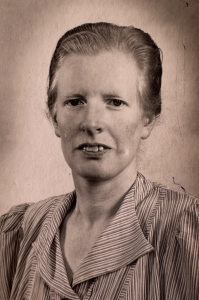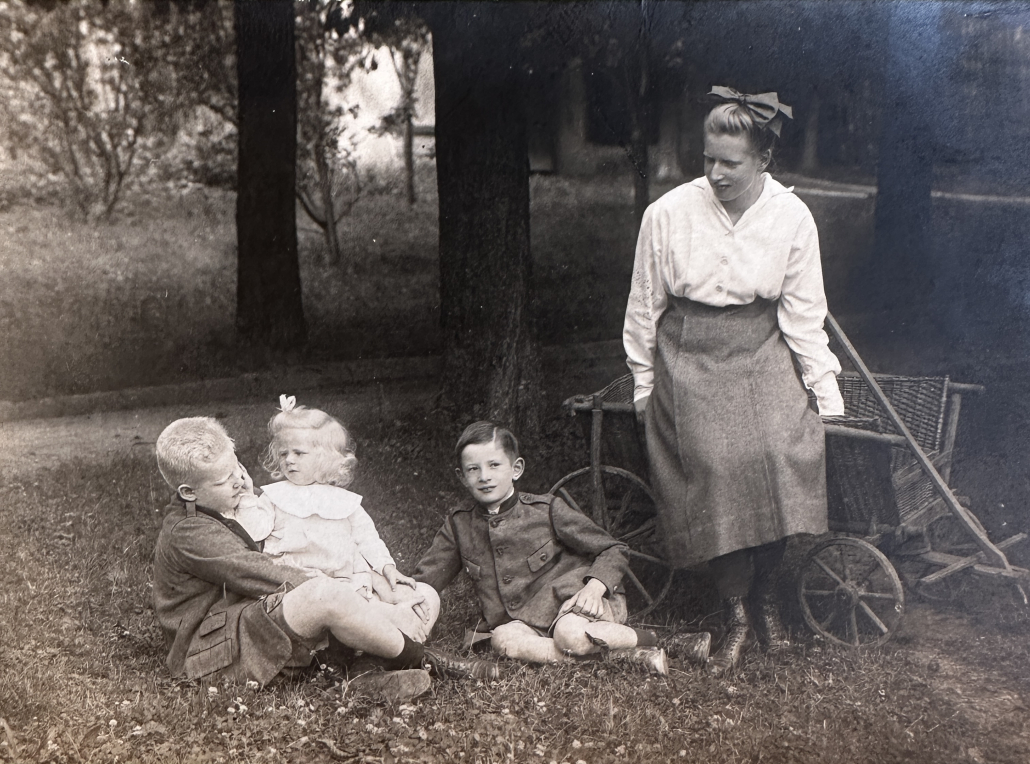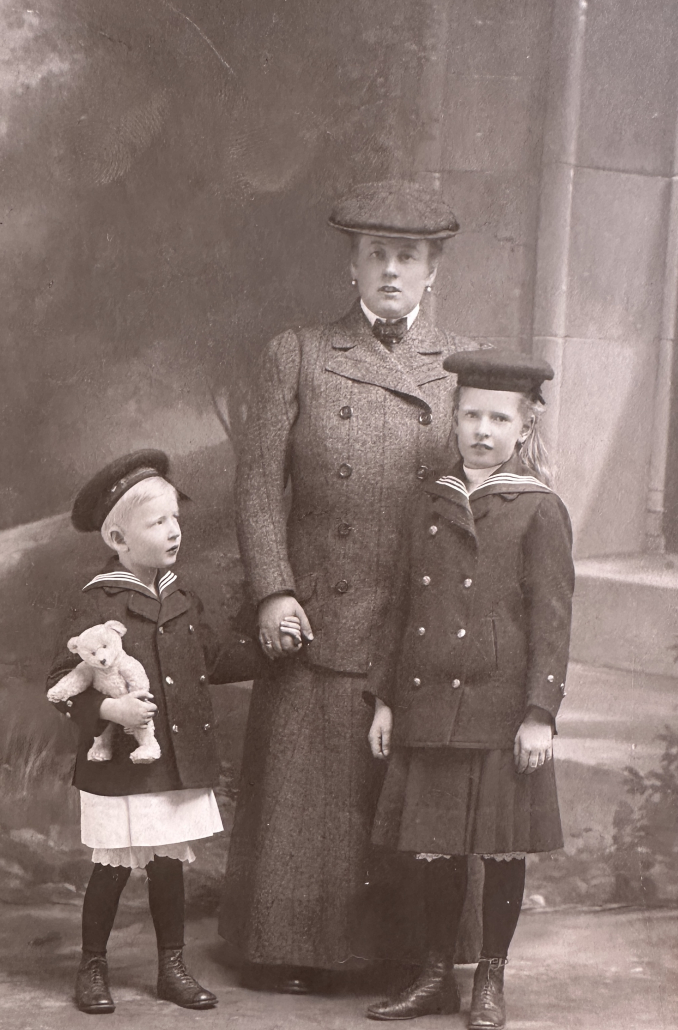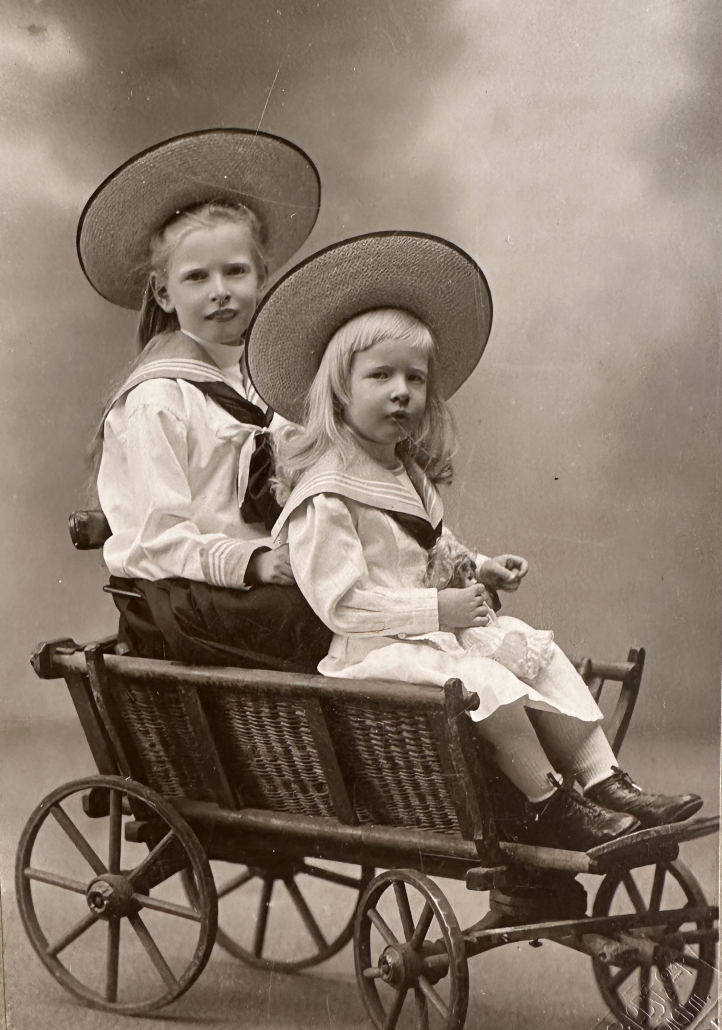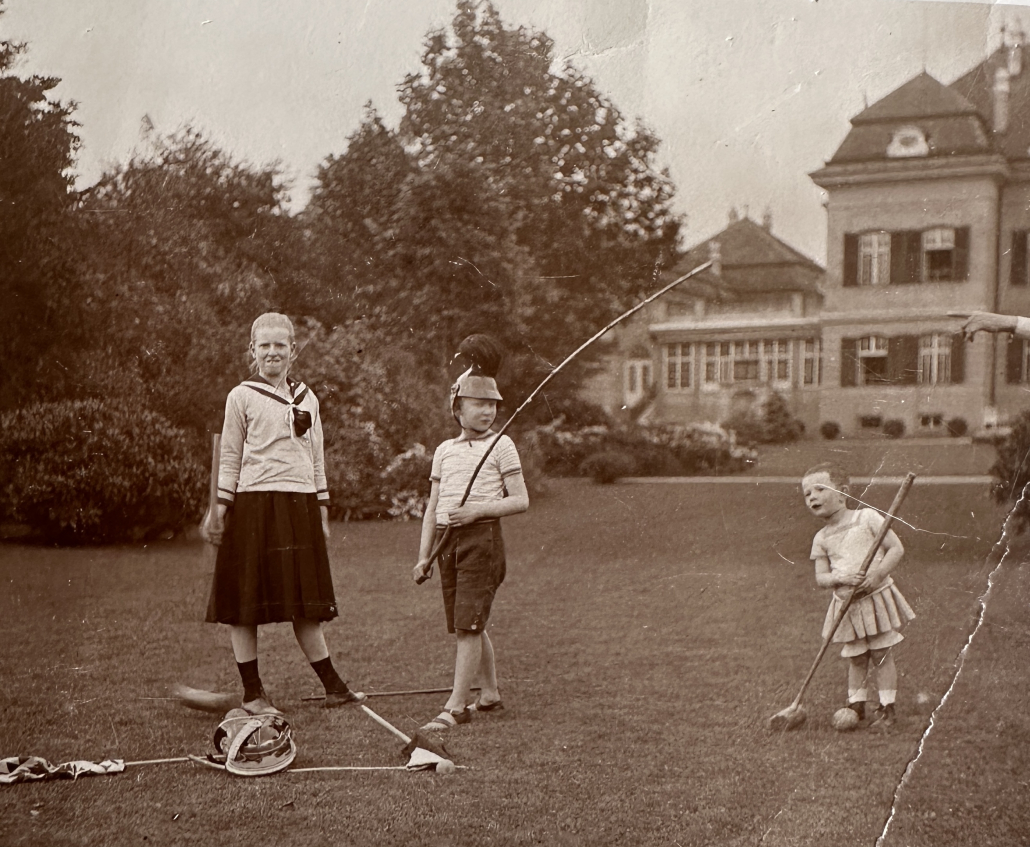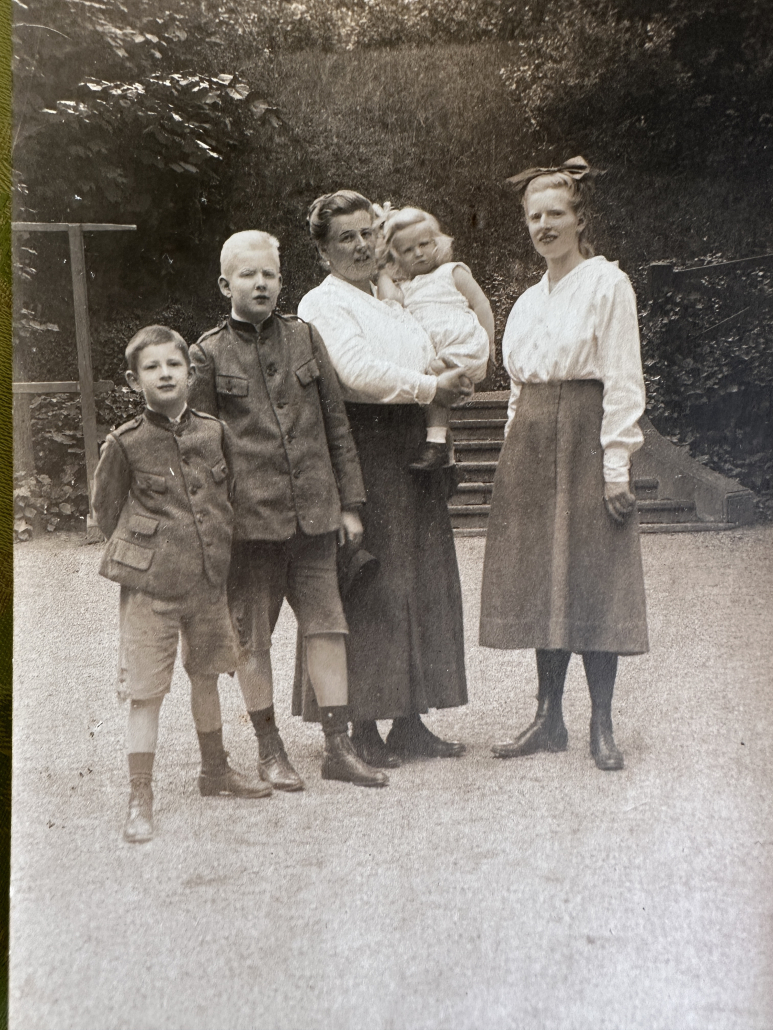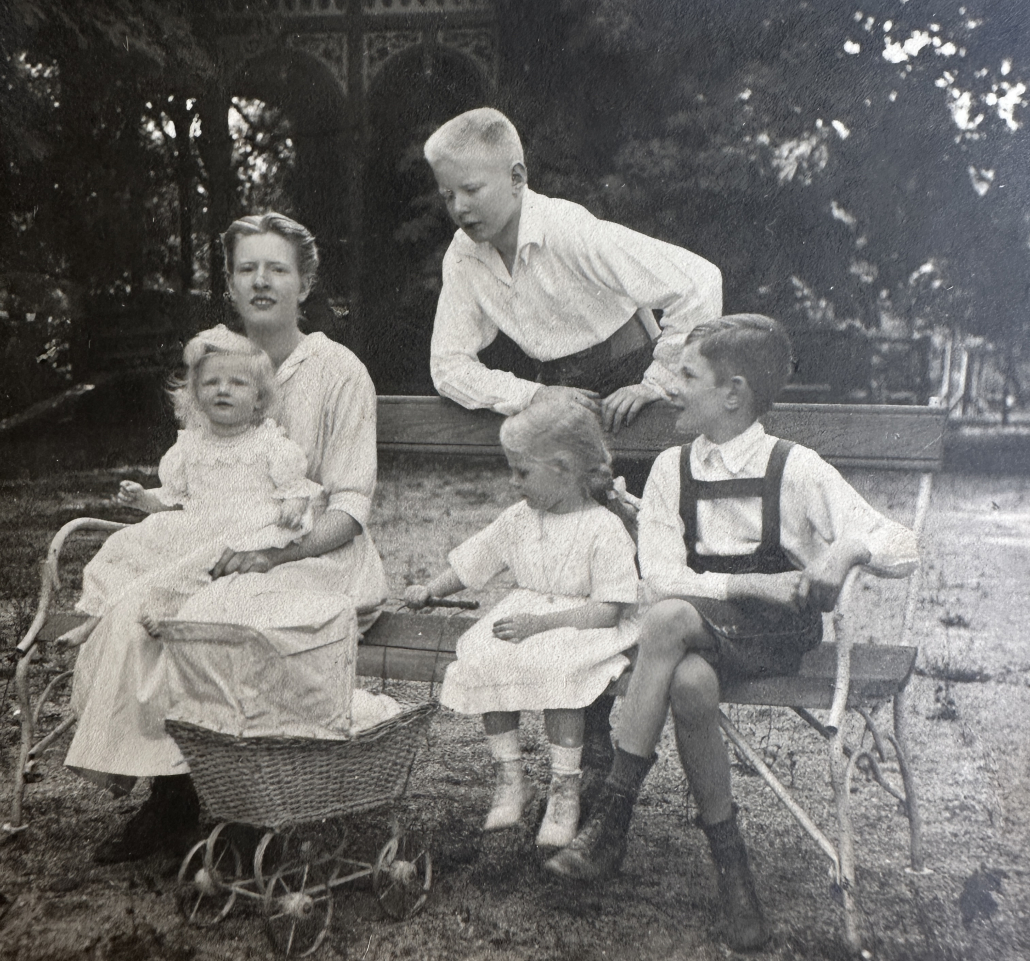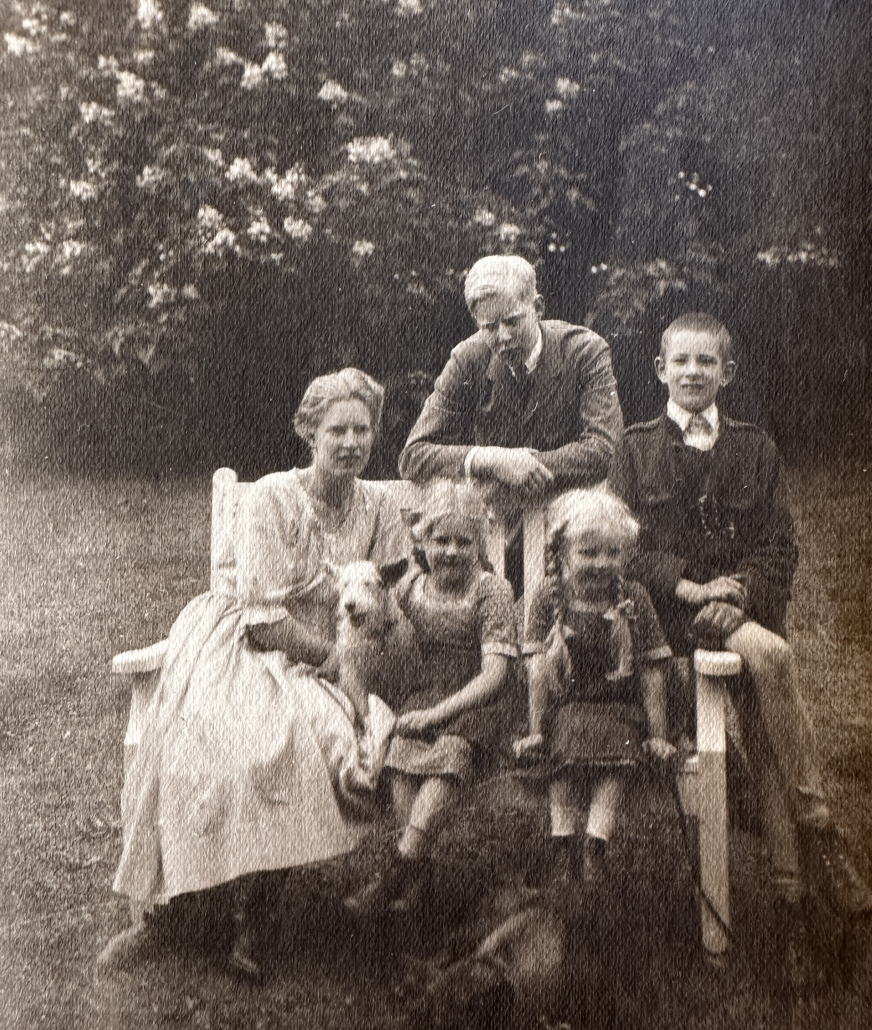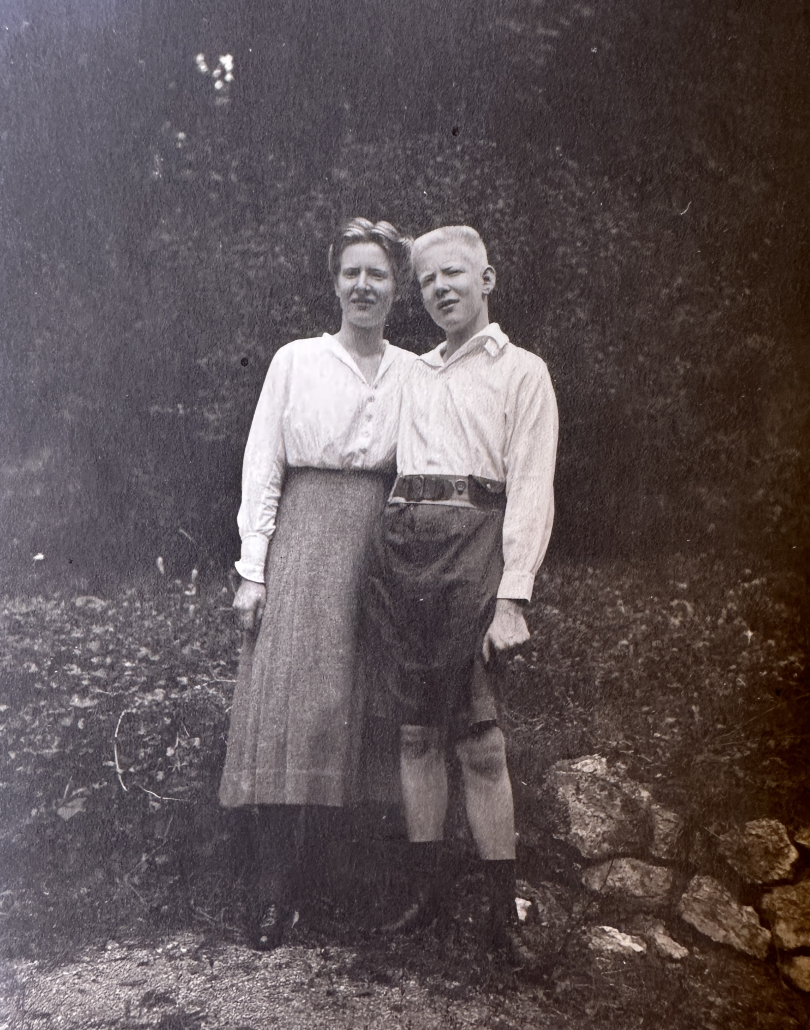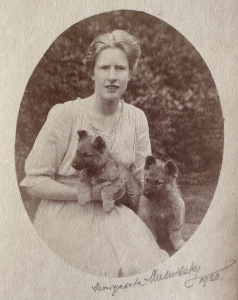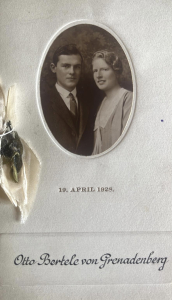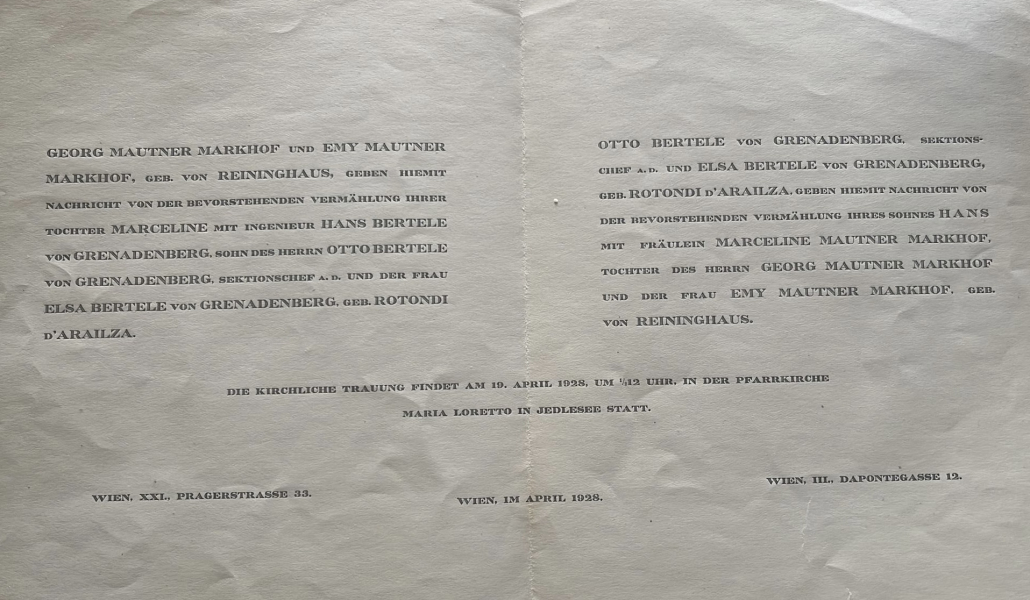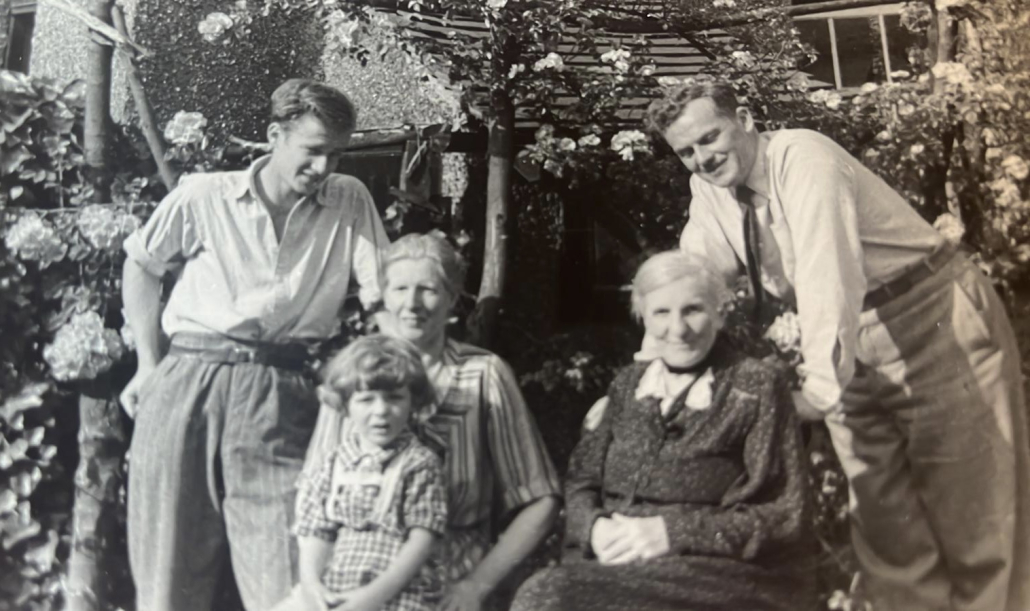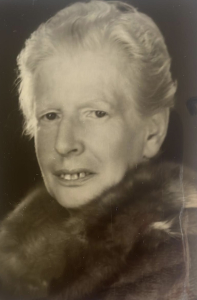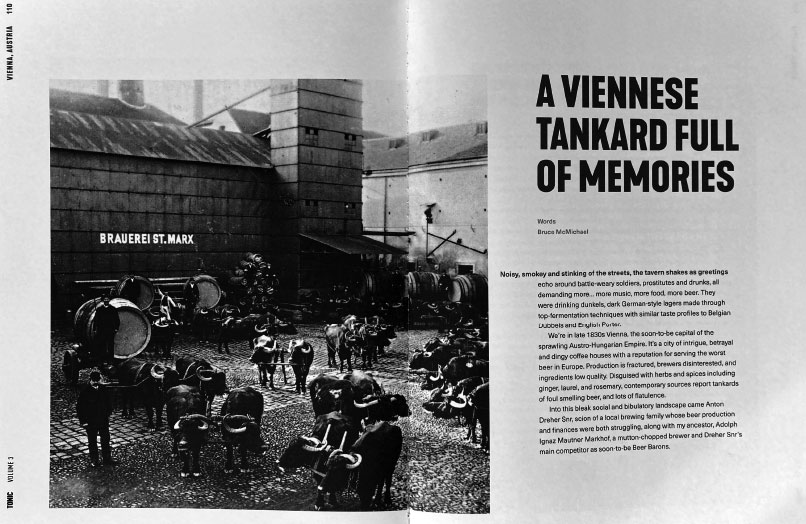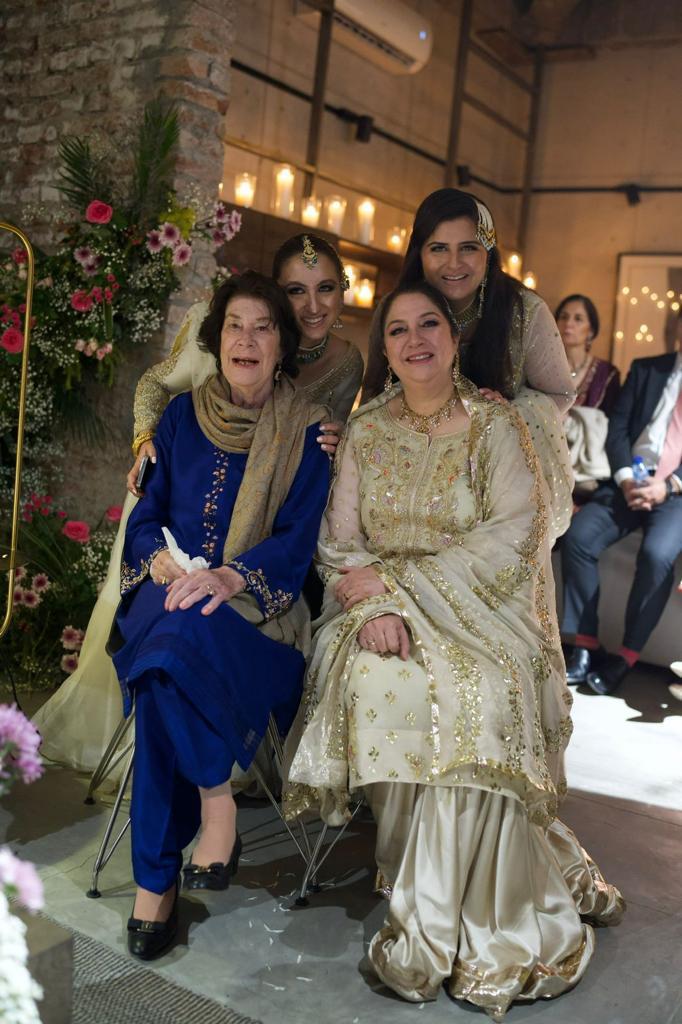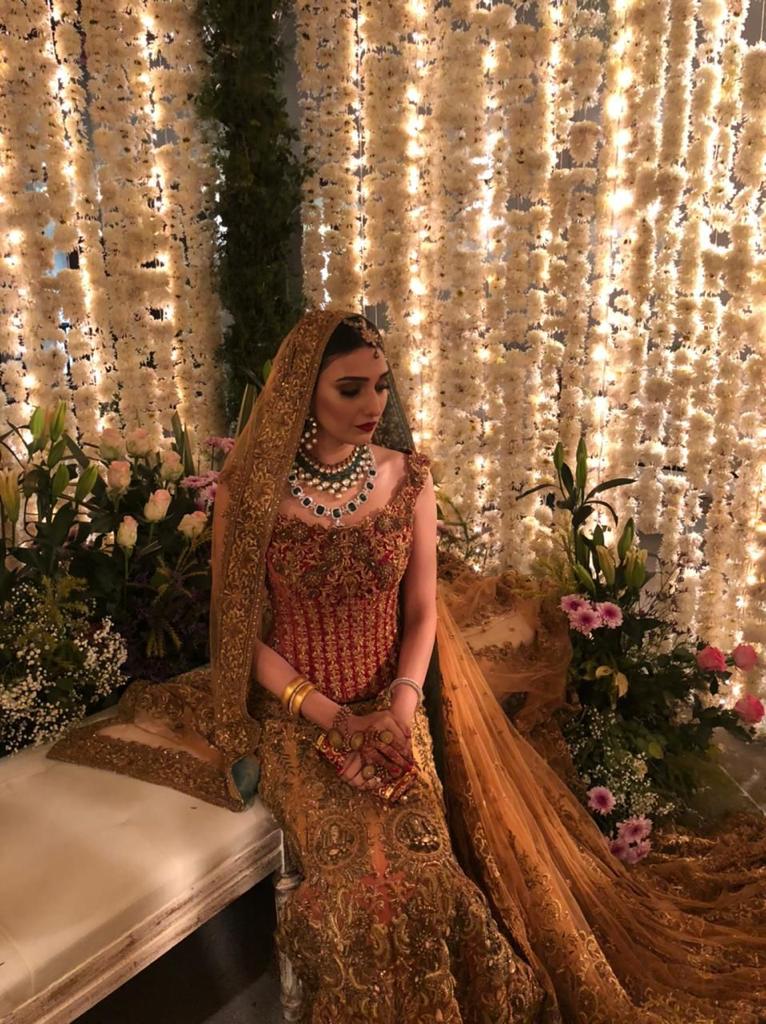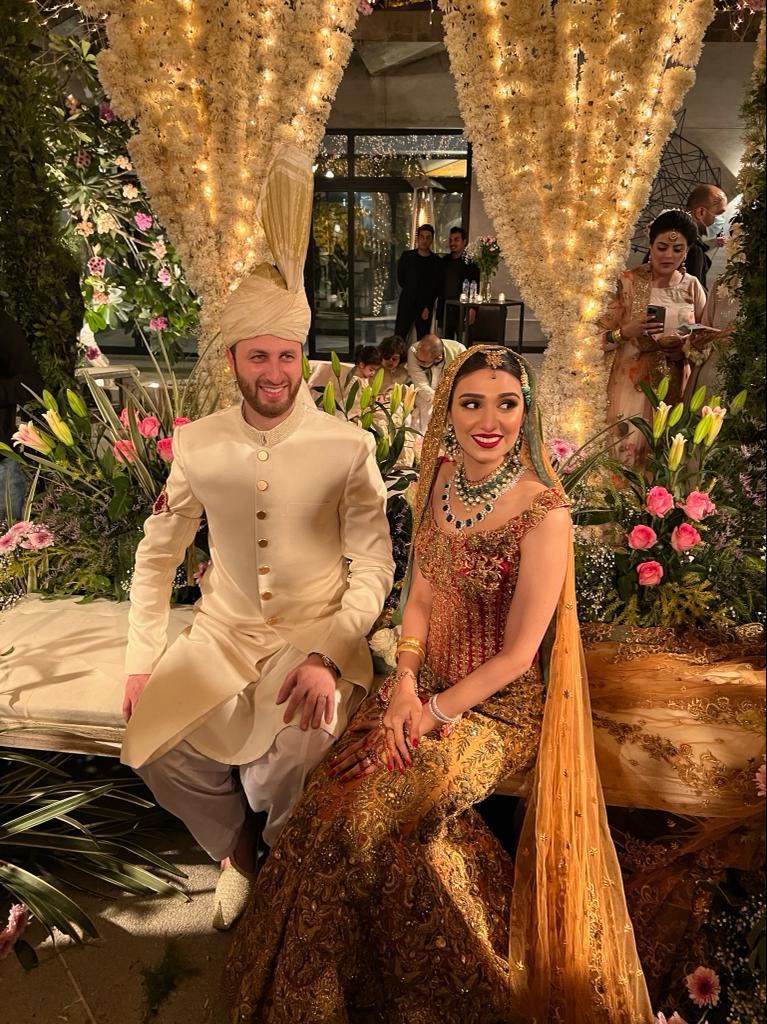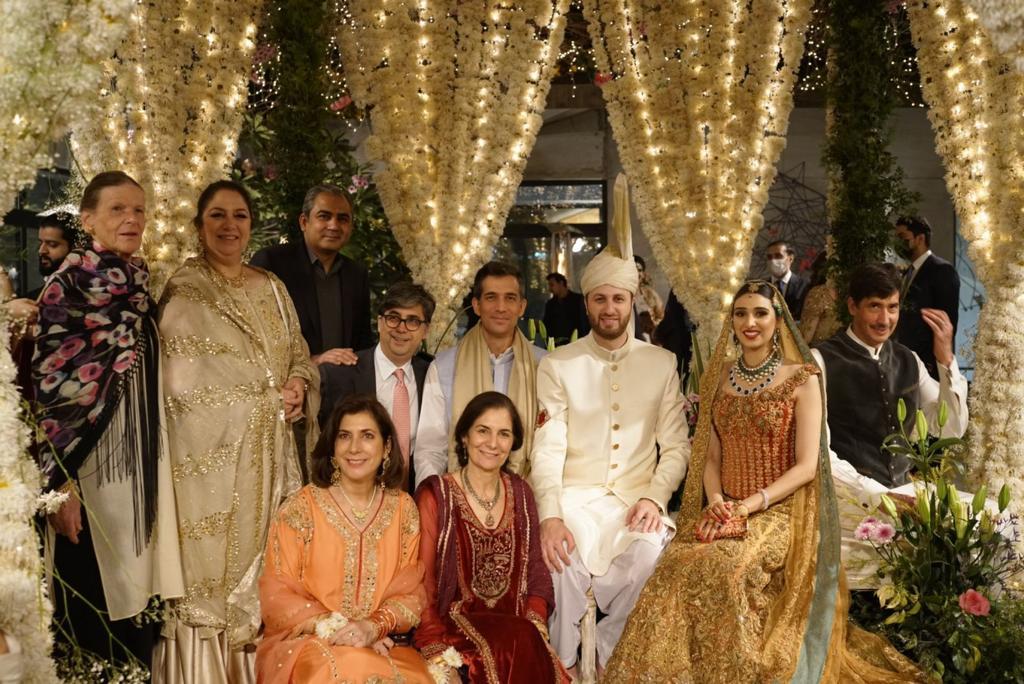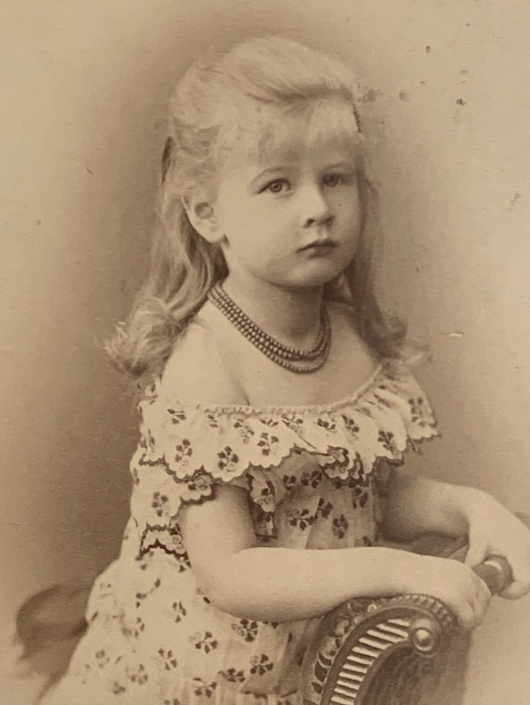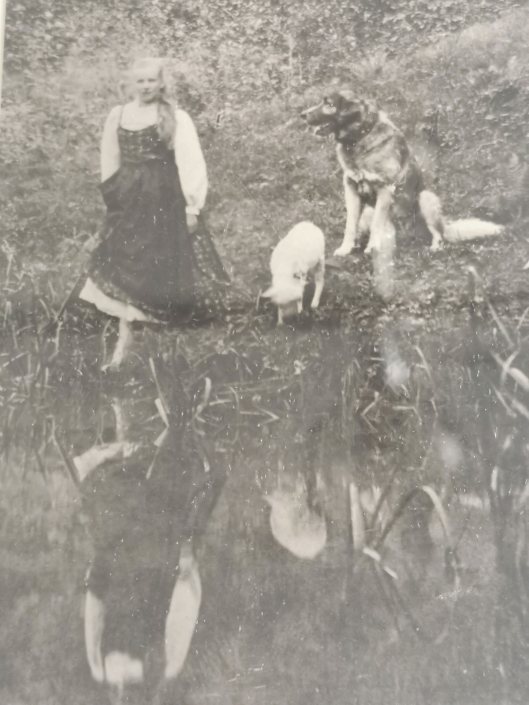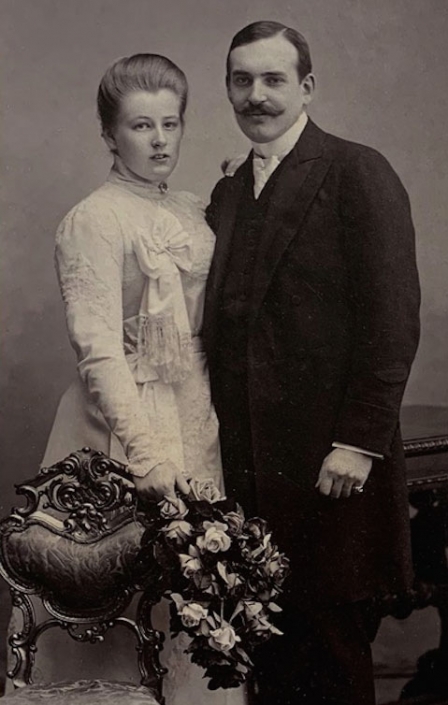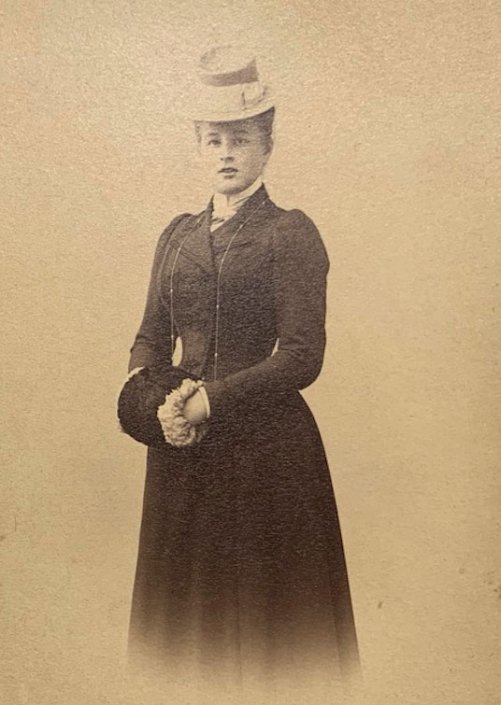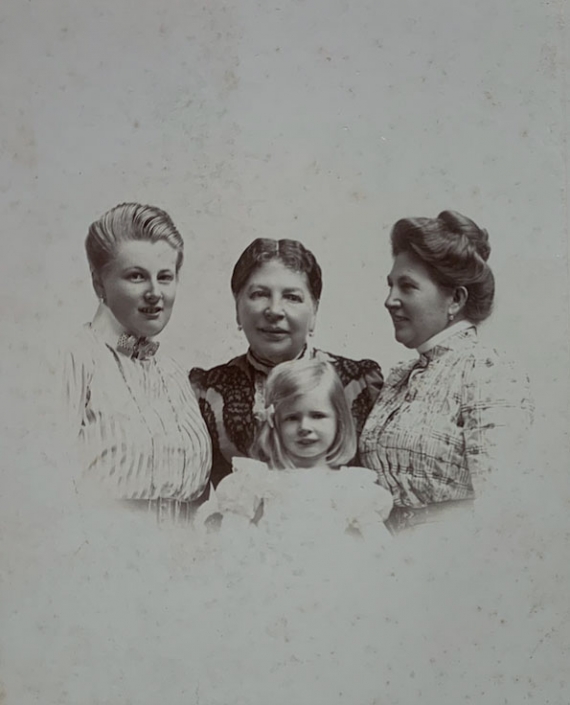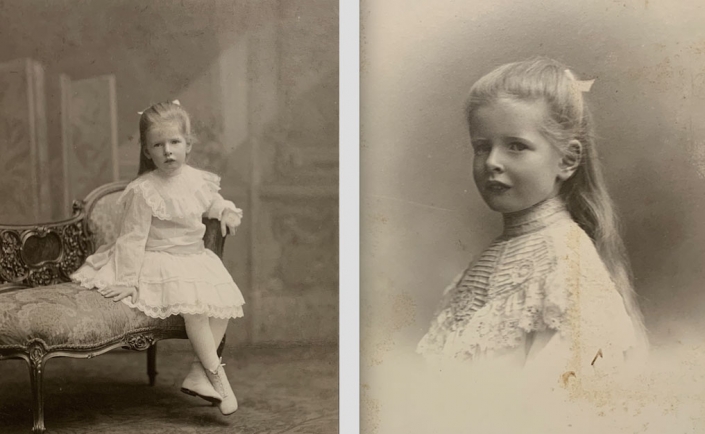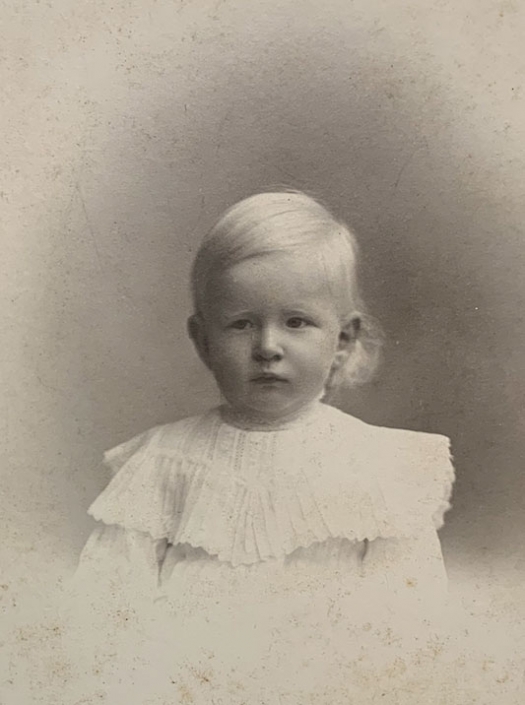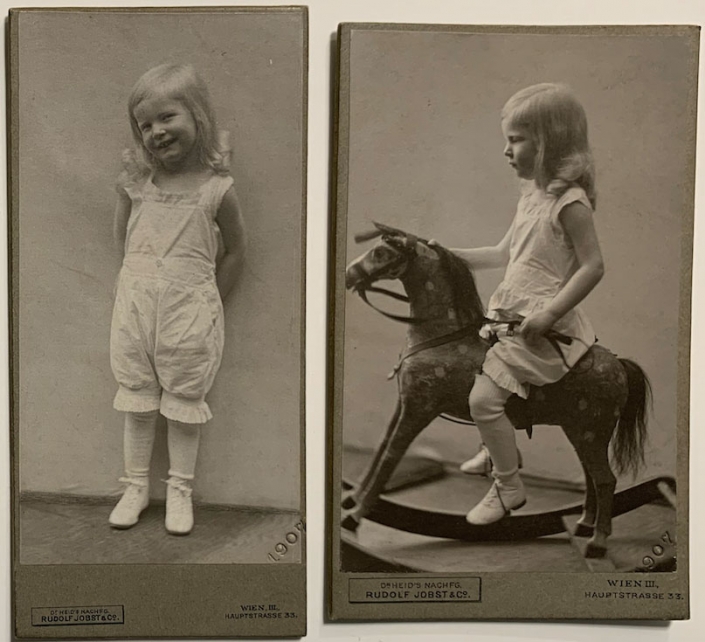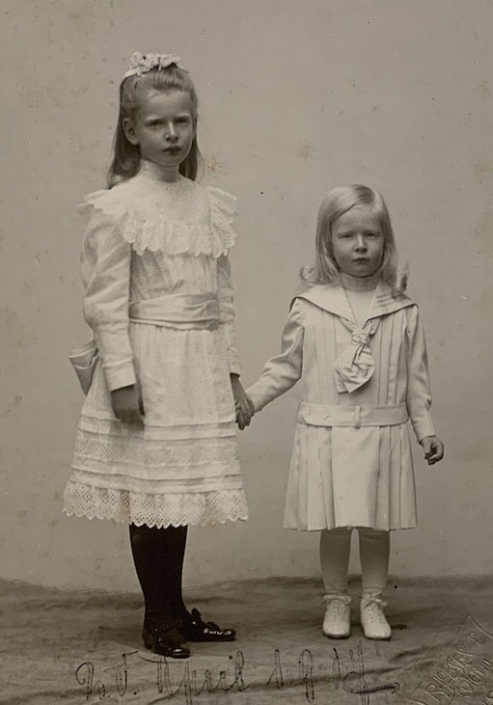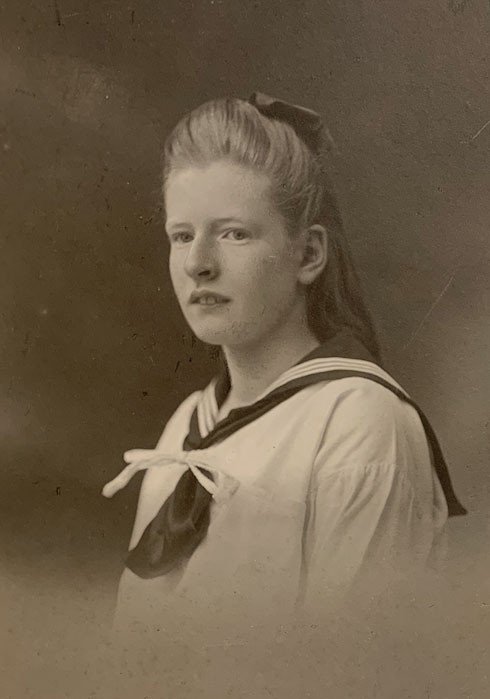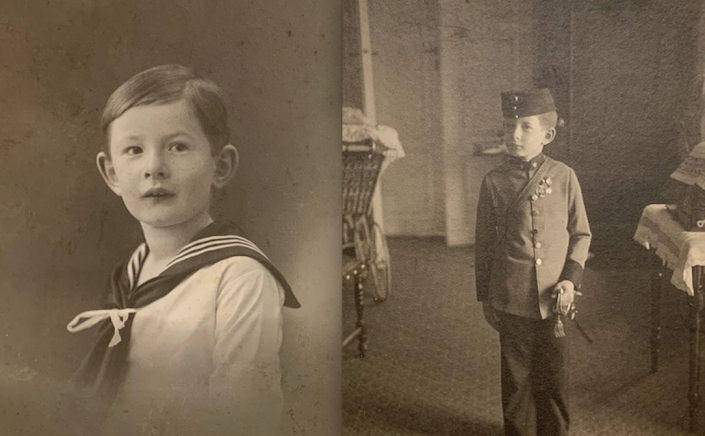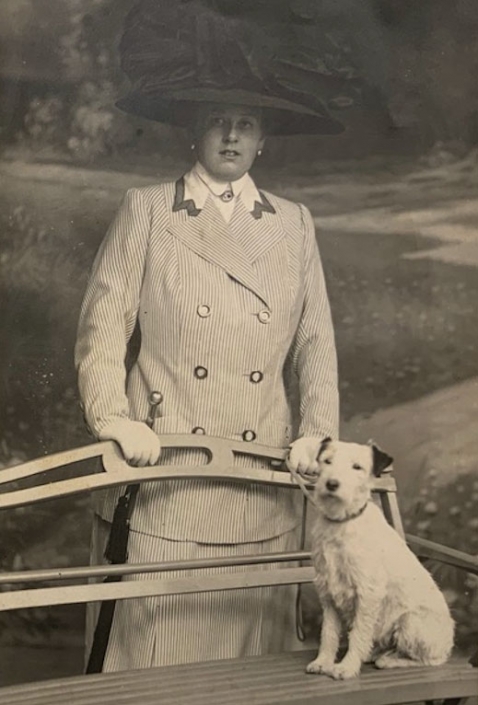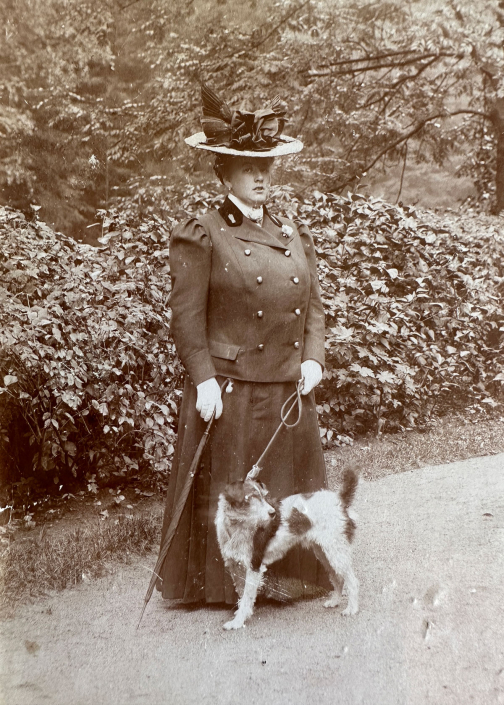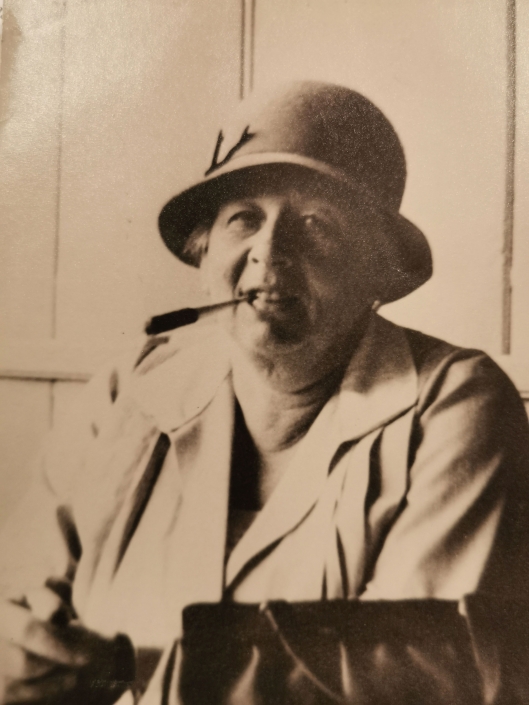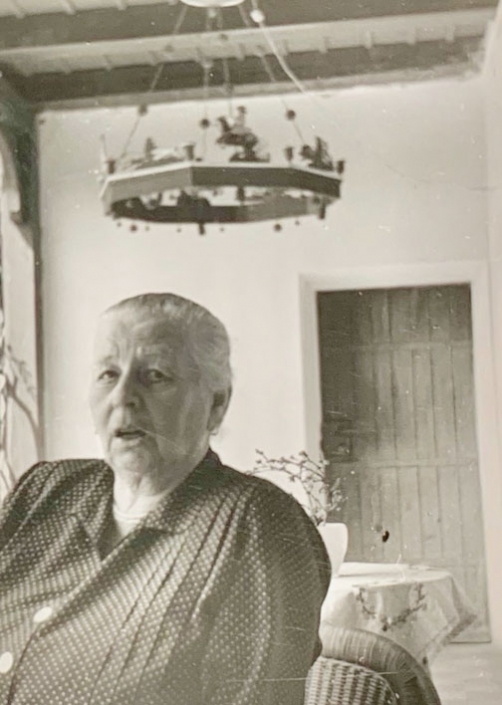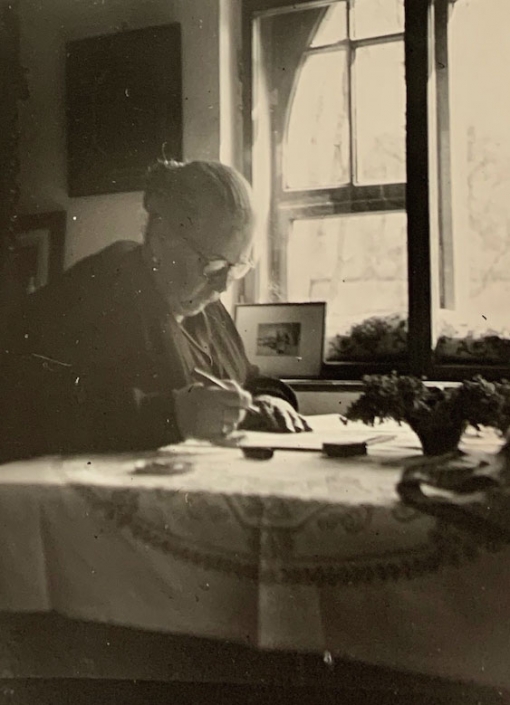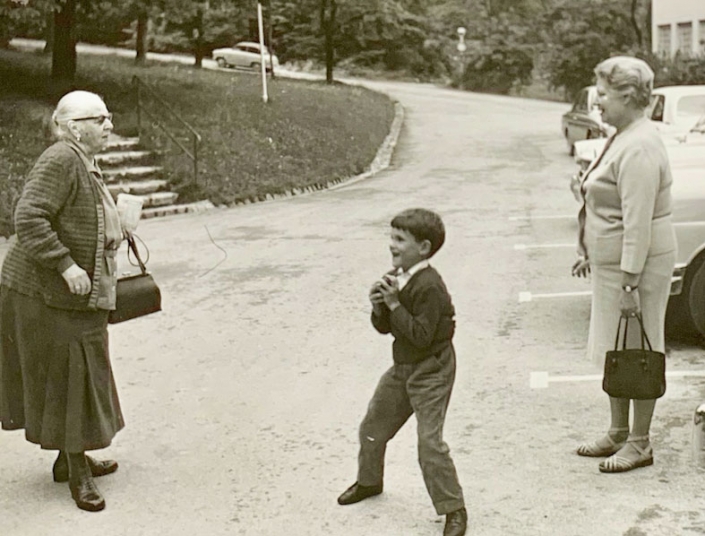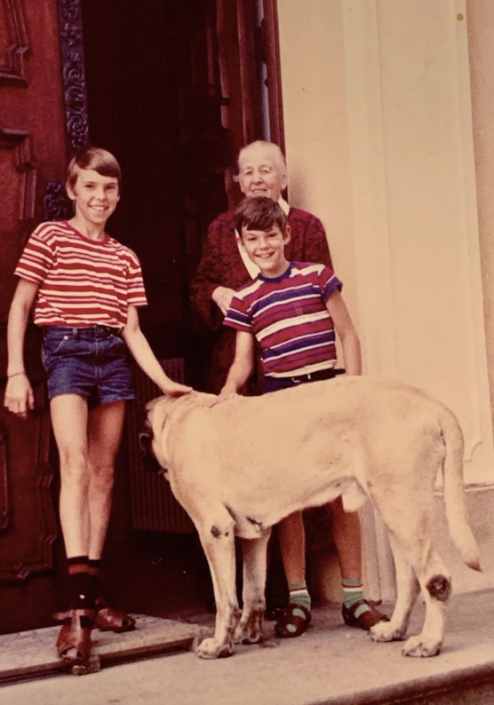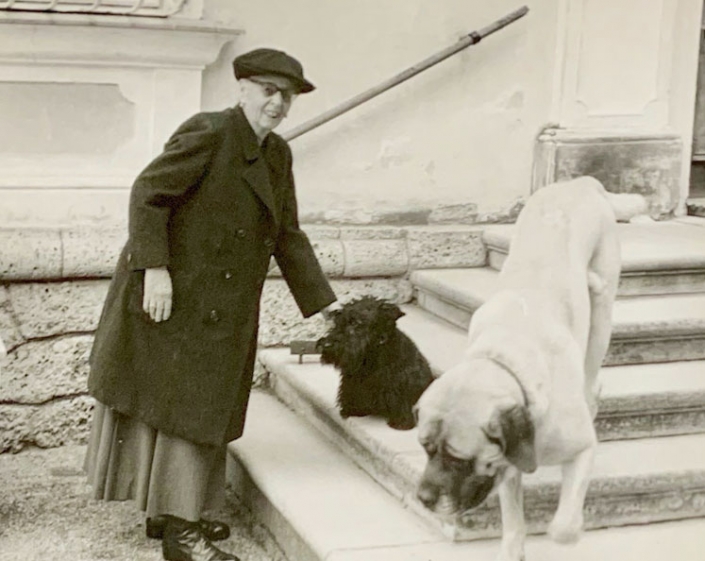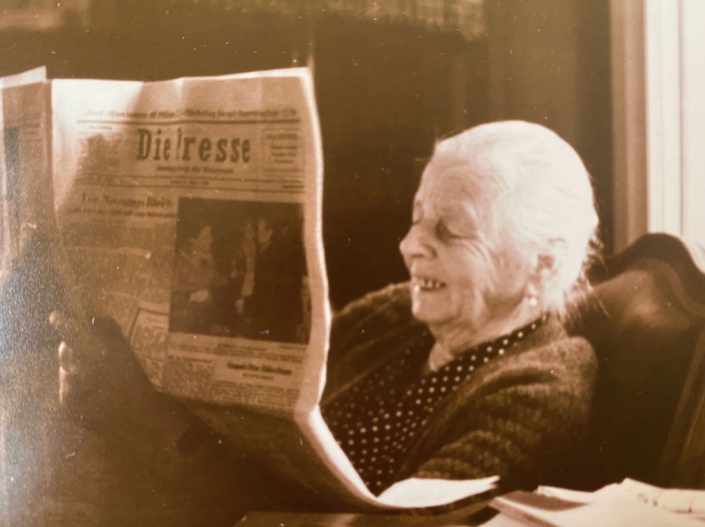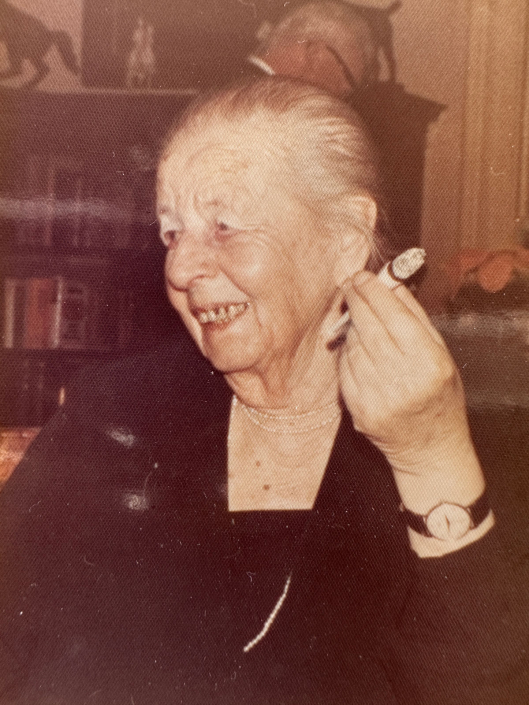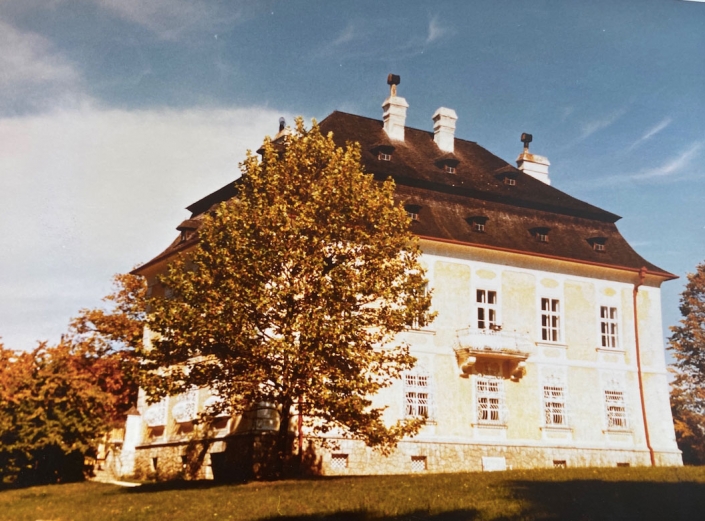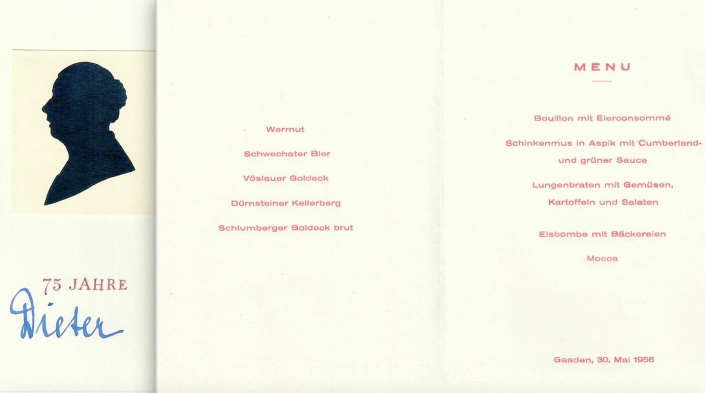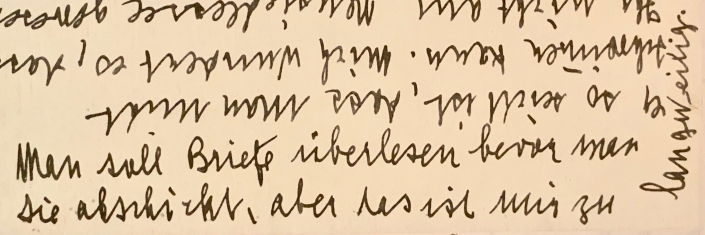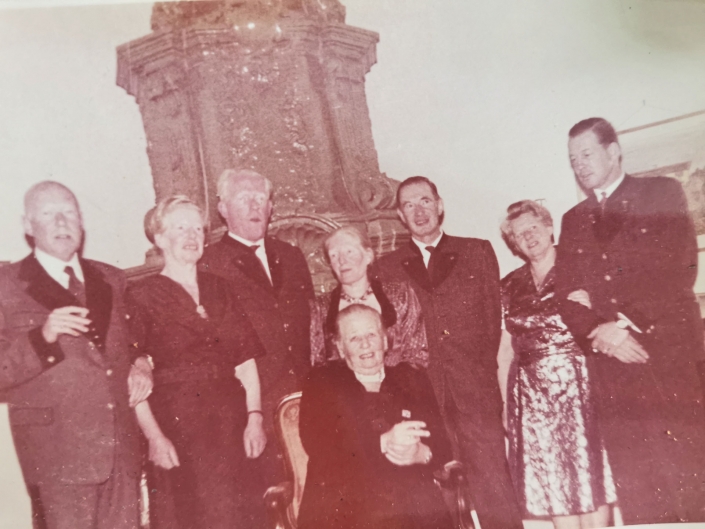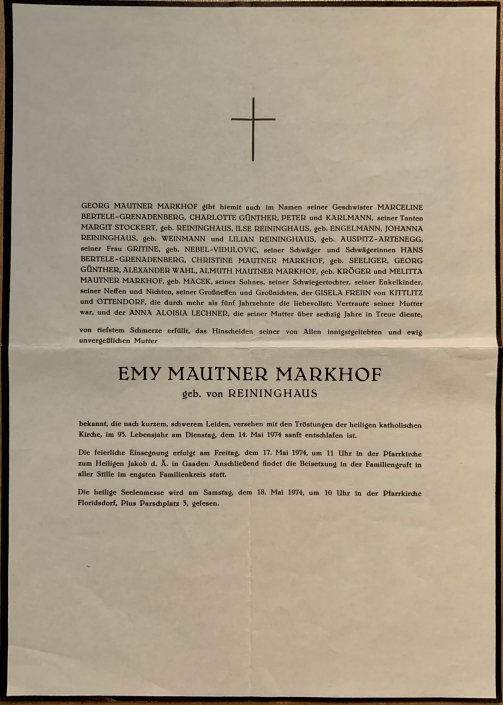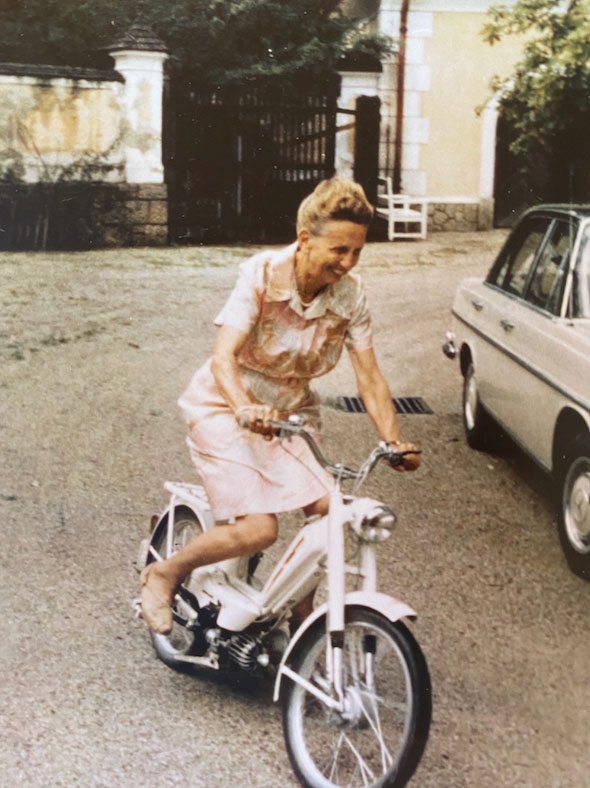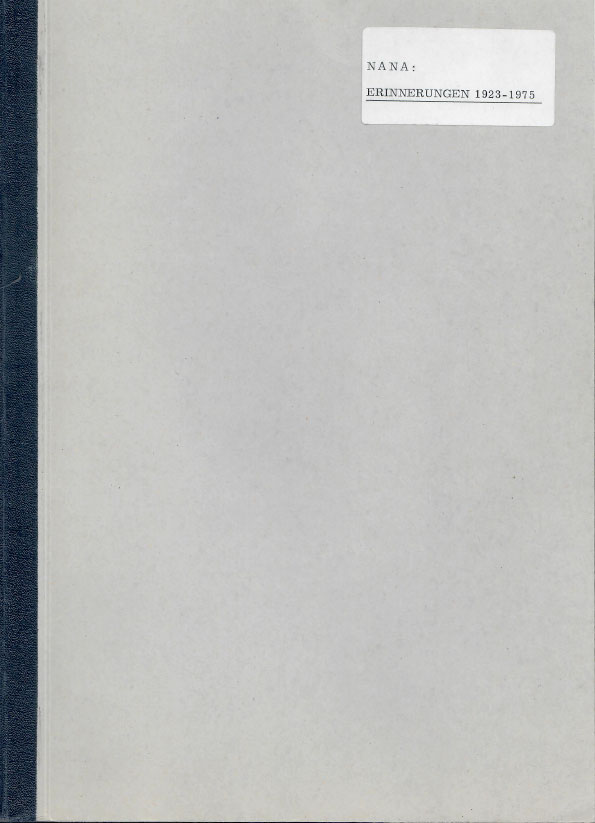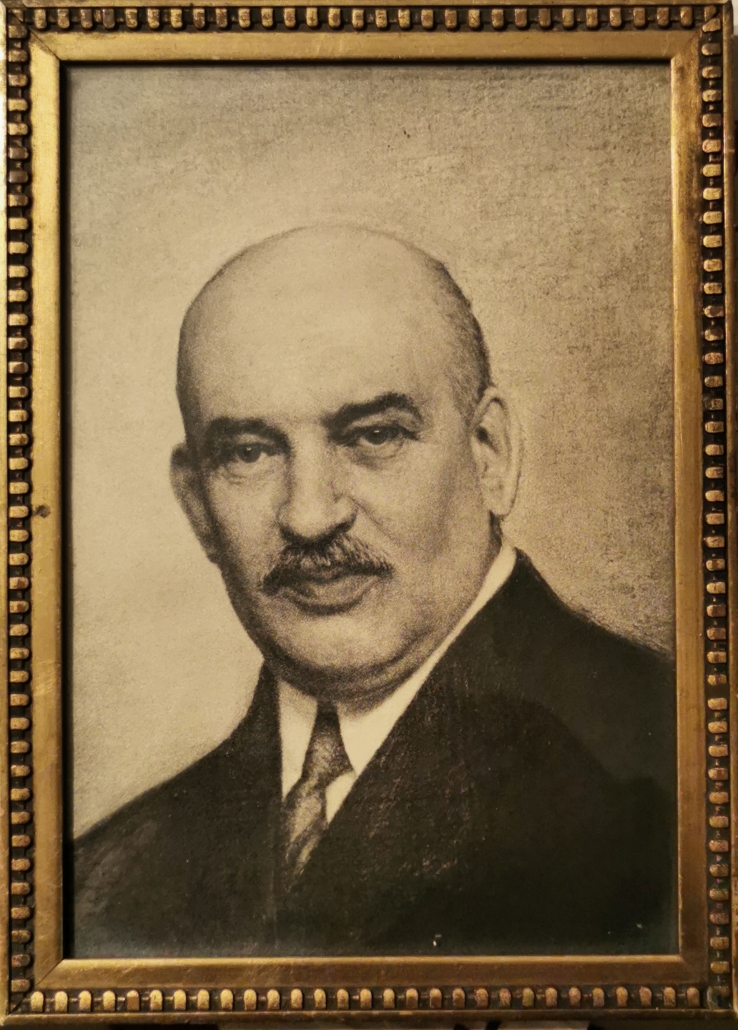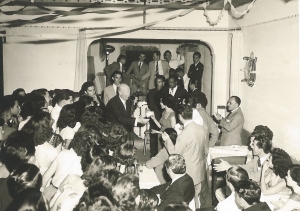In the beginning of January 1982 I had the pleasure of travelling to Pakistan, to Lahore, for the wedding of my sister Elisabeth’s eldest daughter, MUBASHRAH. In 1959 ELISABETH had married SYED AFZEL NAQVI. Both she and Afzel were then studying in London at Queen Mary College.
Now, in the middle of December 2021, forty years later, I am happy to be back in Lahore for the weddings of two of my sister’s grandsons. My brother-in-law, Afzel, had died in August of that same year. Adored by his family, loved, respected by all who had had the good fortune to know him, he lives on, unforgettable, in the memory of us all.
Back in 1982, when I returned home after the fascinating wedding of Qasim and Mubashrah which spanned eight whole days, I wrote up my impressions which I was able to illustrate with photos which were kindly sent to me from Lahore. At that time I was not the keen and irrepressible photographer which I have since become as a result of the two weddings which I am going to describe here. In order to refresh my memory, I took great care to reread all my notes before launching into this new adventure. What I remembered
very well was that unlike weddings in the West which are usually a matter of one day – apart from the engagement party which takes place months or weeks before – in the East, and here I am referring, in particular, to the Indian Subcontinent, the festivities connected with the wedding go on for days on end. In keeping with tradition when all marriages were arranged, each family holds a series of celebrations – at first separately, only for their own kith and kin. These culminate in the Nikāḥ: the wedding proper, held at the house of the parents of the bride. The day after, at the house of the bridegroom’s parents, the Walima takes place to celebrate the consummation of the marriage. Mubashrah and Qasim had an arranged marriage. In former times the couple saw each other for the first time at the Nikah. My niece, however, was given the chance to meet and converse with the young man her parents had chosen to be her husband. Qasim came to this crucial meeting from as far away as Seattle, on the West Coast of the USA where he was working for Boeing. Had the bright young engineer not been to Mubashrah’s liking, there would have been no marriage. Her parents would have continued their search for suitable bridegroom. As it happened the result was a happy marriage. Three children were born to Qasim and Mubashrah: two girls and Haider (pronounced Hedda as in Ibsen’s Hedda Gabler). Haider is the bridegroom in what I refer to as Wedding Number One.
As far as I know, both the weddings I was going to attend were love matches. The young couples, all very cosmopolitan in outlook were living, or going to live, in the United States. Nevertheless, according to my sister, 90 % of the marriages in Pakistan continue to be arranged. In many cases it is the young men you ask their parents to find them a suitable bride. The actual wedding, the Nikah, is purely a civil contract, signed by the fathers of each of the parties in front of witnesses although a Mullah may be present to give his blessing and to sing the praises of Allah. At the beginning of this act, the father of the bride is obliged, by law, to ask his daughter for her consent. The signing of the contract takes place separately, on the one side, the bride with her family, on the other, the bridegroom with his. All this takes place in less than fifteen minutes.
Forty years ago I had attended the wedding as a member of the family of the bride. This time I was seeing it as a member of the bridegroom’s. There were differences but, above all, then as now, it is a continuous and immense celebration for the womenfolk of both families and their friends. It is the quintessential party for women, the occasion when they dress in their very best. Every night they appear in different colourful and dazzling outfits. Dancing and singing, accompanied by the sound of drum and tambourine, have always been an important part of most of the festivities. Nowadays everything is much more relaxed and, at the major festivities, drum and tambourine have been replaced by live bands and DJs.
But enough now of technicalities. I shall move on to the account of events, beginning right at the beginning with my trip to Lahore.
Saturday, December 18, 2021
I was rudely awoken by my alarm clock at 4 a.m and left Madrid at 8 a.m. aboard a plane of Qatar Airways bound for Doha. The flight was pleasant, about six hours. I spent most of the time dozing. At one time I had a snack and later on a glass of generously served Laurent Perrier rosé which, as was natural, made me see life, in general, even more en rose. The layover in Doha was about three hours. The interior decoration of the airport was made up mostly of steel. All the employees and passengers appeared to be foreigners. It was difficult to come upon a Qatari or a native of one of the neighbouring countries of the Persian Gulf. Finally, in the vast Duty Free, I espied two men clad in the classic flowing white robes, their heads covered with a chequered kerchief bound by a black band. Not wanting to buy anything, the two made their way to the Al Safwa waiting room.
I, who also had a pass to get into the business class lounge, decided to follow to observe them more closely. Out of pure curiosity. They quickly disappeared to the room inside. Next to the entrance was a counter where I was asked for my boarding pass. I was directed to another lounge called Al Moujon, an immense and complex, architecturally modern space with a restaurant and an enormous pool. Evidently, this was the lounge for the passengers that were not native to the country or from the region. Al Safwa must be exclusive to just those groups. Or it was simply a case of men only. To my disappointment, I did not see another person in native attire.
At Doha, I ran into the entire contingent of Pakistani grand-nieces/ nephews who were all coming from the United States, mainly from New York, including Haider, bridegroom number one. We met when it was just about time to go to the gate to board the plane to Lahore. There was a great number of people boarding for this flight! The plane was gigantic, made up of three sections of three seats.
Sunday, December 19, 2021
The flight took about three hours and we arrived just after 1 a.m., local time. Four hours ahead of Spain. What a hustle and bustle! So many people at the airport! It was nearest thing to an ant’s nest. Every passenger seemed to have the entire family there to welcome them back home. It was like Barajas, our airport at Madrid at peak moments but multiplied by three. On top of that it was no less than the middle of the night. At the Passport control, I had to wait for ages because of the length of my surnames (father and mother’s as is customary in Spain). They did not fit in the space allocated for surnames on the computer. The staff attending were obliged to enter them in full, and forward them to the database. I was surrounded by nephews/nieces, and a long queue formed behind us. In the end, we passed through. Friends of the nephews who work at the airport, took care of getting our luggage through customs without checking it or anything. We arrived at my sister’s house. As was only to be expected, she was fast asleep. I went straight off to bed and slept like a log well into the morning.
It was a happy and emotional reunion with my sister and her children and grandchildren coming from abroad and living these days in her large house which has six beautiful bedrooms. My room was superb with its own bathroom. It had a large writing desk and, I believe, Afzel had used it as his study. The room had an enormous window which took up the whole of what would have been one of the walls. It looked out onto a large patio done all in brick and set with lush, leafy green plants. By the afternoon nearly all the members of my sister’s family were gathered at the house: those who live in Lahore and those who had come from abroad. That is not counting the Raza family, Mubashrah and Qasim, the parents of Haider, nor his two sisters, one of whom had come from Dallas with her husband and their small three children. Of those, coming from abroad, some were still missing. Even so there were already a great many of us. Sohail Shaji for the family, my sister’s eldest son, had come with his wife, Iram, from Kyrgyzstan where he is the Chancellor of a University created by the Aga Khan. The Aga Khan himself had chosen him for the job. Shazil, the eldest of Shaji’s three children, and his wife, who were recently married and live in New York, had travelled from Doha on the same flight to Lahore the same plane as I did. The youngest son, sadly, was retained in NY because of Covid. The daughter, Aleena, beautiful, just like all the daughters and granddaughters, without exception, is full of spirits. Quite a character. Then there was Farvah, my sister’s second daughter, together with her husband, Imran, and three of their children. Still missing was one of the sons who just started working in Burundi for an NGO. He had spent about 40 hours waiting in an airport in Nairobi because of complications with his PCR test. Faisal, the second son, a renowned lawyer in Lahore, divorced and remarried, has altogether four children. The two older ones were still on their way from Canada, from Montreal and Toronto. His new wife is an actress and TV personality. All very impressive, because on top of all that, she runs a very successful cosmetics line. The third daughter, Munazzah, the one who looks most like her mother, lives between Lahore and Karachi. After living in the United States for many years working for banks/ US banks, she now works for a Pakistani bank. Her two lovely daughters were also on the flight from Doha with me. Ijlal, my sister’s youngest son, was still on his way from Singapore, where he is a professor. Titu – or T2, is the adopted son of the family, the son of one of Afzel’s sisters who died in an accident when he was a child. He has created an impressive career for himself in the work of Communications in Lahore. He manages his own TV channel, which is very popular and influential, as well as newspapers, etc. He is married to a delightful and beautiful young woman, Varda. They have four children. Varda studied medicine and is a radiologist. My sister’s home with its six bedrooms, was full to bursting. Those family members for whom there was no room were farmed out to relatives and friends.
This first day of my visit the weather was rather cool but with bright sunshine. Shaji took me around for a walk in the large and beautifully kept garden. It has a big lawn with a mango tree in the middle. There are masses of shrubs and flowers all along the boundary walls. In one of the corners, there is a large flower bed dedicated to the spectacular Amaryllis, but it was not their time to flower. There were some small lemon trees, more like bushes than trees, with tiny very decorative lemons. I took a few to Madrid to see if they thrive in Mezalde which would be a pleasant surprise. After 8 p.m., we went to Haider’s parent’s home, where all the family and friends were gathering – old and young. Everyone was wearing Western clothes. All the young ones in jeans. The older people were dressed elegantly and the women jeweled. Natasha (who is pure Pakistani despite her Russian name), was not expected to put in an appearance that evening. Later I learnt that our hosts, had not counted on quite such a big turnout that evening On seeing that we were arriving by the masses, they ordered more food from a caterer. In the matter of an hour, the caterer arrived and dished up a magnificent buffet. It seemed like magic to me. All that one would have been lucky enough to get in the West, at such short notice, would have been a couple of pizzas.
What a lot of happiness and laughter! The women danced to the sound of the record player. Modern music. Suddenly The Blue Danube was put on at which I also rose and twirled round a couple of times, dancing the waltz to the left, as befits a former Viennese debutante. The three great-grandchildren of my sister who came from Dallas were excitedly darting around from here there and everywhere. The youngest, a little girl, was just 2 years old. Children, as I was to see, participate in all the festivities. Our host, Qasim, had lit two large braziers out in on patio. That was welcome because the night was cold and damp.
Monday, December 20, 2021
Another sunny day and we were sitting outside in the beautiful garden. There is a gardener dedicated exclusively to the care of this garden. Here in the Punjab (in Persian, five rivers) in the valley of the Ravi, which is a tributary of the Indus River, everything grows in profusion. The soil is considered to be one of the most fertile in the world.
We were much enjoying ourselves, all sitting out there in the sun. Then lunch was served. Inside the house,. There were about fourteen of us seated around the table in the dining room. The younger crowd all ate in one of the two living rooms, many of them seated on the floor, as is customary in Pakistan. That evening there was a big party, again at Haider’s parents’ home. It was generously hosted by his uncles, Shaji and Faisal. From today onwards and on every day, the women began to wear different, magnificent outfits.
The patio of the house was beautifully decorated with flowers and lights. There was a band playing at full tilt Immediately, everyone was happily dancing. Young, old, and children. The little girl of two was dressed in beautiful clothes – an adaptation in miniature – of what older girls and women would wear, but without the shawl. And every party comes with a splendid buffet (the superlatives are piling up in this story but it is the pure and simple truth). Not much time is dedicated to the meal, something that had already caught my attention on my first visit to Pakistan. Some people eat sitting down but the majority remain standing, which highlights the fact that the food is always prepared in such a way that no knife is needed. The biggest attraction of the party was the dancing.
Tuesday, December 21, 2021
In the morning, Farvah took Ijlal and me to the village where the Naqvi family has a farm. Rice and wheat are grown there. Afzel had experimented with planting teak trees. At the farm the family had created a small private cemetery which is where Afzel is buried. The little cemetery is of relatively recent date because the Naqvi family lost all of their land in Patiala, in what now is a part of Punjab in India a result of the Partition that occurred in 1947. They were compensated with the grant of some land in the Pakistan part of Punjab which is where the village is. There are about five or six austere tombs made of cement. Afzel’s grave was still but a mound of earth. It was his wish to be buried at the foot of his father’s grave beneath the tree that stands there. The grandchildren who had been with me on the plane had all been to the cemetery straight away, the day before. Only Ijlal, my sister’s youngest son, who had arrived from Singapore last night had not yet been to the cemetery. Because of strict Covid restrictions in August, he had not been able to attend his father’s funeral. Afzel founded a school for girls in the village and had contributed generously the maintenance of two others that exist there. A venture that is now being continued by his children. Before leaving the village, I mentioned that, if possible, I would like to visit the school for girls. Farvah kindly accompanied me. It was an opportune moment to visit because all the girls were just outside for recreation. There are about 475 girls attending the school. I thought it an impressive number for a simple village, but a Pakistani village is nothing like the villages in Europe, which are just a nucleus of a few houses. And, if we’re talking about Spain, today, often there are only a few inhabitants remaining in many of the small villages. Here the village seemed more like a sprawling town, home to thousands of people. The school building was square in shape. It had only one floor with the classrooms facing the central courtyard. Outside, there was a large playground for the children. When we went to have a look at the playground, we were immediately approached by a bunch of little girls who were curious about us visitors. Their endearing little faces were all immense black eyes and wreathed with broad smiles. We did a quick round of the classrooms where I noticed that nearly all had a moralizing or exhortatory phrase written on a piece of paper and stuck above the door or on a place where one could not miss seeing it. Many were in English as for example: “Silence is Golden,” I was very impressed by the work being done at that village school, even more so when I thought about the sad situation women find themselves in neighbouring Afghanistan.
After this visit we left the village. It is a haphazard agglomeration of small buildings made of adobe and bricks. The road was very bumpy. Buffaloes sat ruminating by the edges on small plots of land. Tiny donkeys dragged carts with huge loads. And, as it is often seen in Lahore, entire families, three or more, rode on small motorbikes. Something that also deserves mention: not far from the the playground of the girls’ school, there is an immense white house which towers above all the other buildings. It belongs to a local who had returned home and sunk into it, a goodly part of the savings he had made in Saudi Arabia or some other oil-rich country on the Gulf. It is the dream of many a Pakistani of humble origins to construct an ostentatious house, be it in town or in the remote village he came from.
That evening, again at at the home of Haider’s parents, the ceremony of the “Milad ” took place. It is attended only by women. There was a singer who was seated on the sofa in the living room (with her mother next to her) singing songs in honour of the prophet. The women and girls surrounded her, seated on the floor. There were chairs for the older women. The event was in full swing when we arrived, and continued for about three quarters of an hour. The singer had a deep, powerful voice. Some of the singing seemed to me to have a resemblance to cante jondo ( singing peculiar to Andalusia in which deep feelings are expressed ). When this solemn and ritual part of the evening ended, the party continued with a buffet, etc. with a constant flow of relations and friends who came to say hello. Natasha made a brief appearance that night. She wore yellow which, traditionally, is the colour the bride wears during the celebrations prior to the marriage.
Wednesday, December 22, 2021
Today, we all went to visit the Old City of Lahore. Everything was very well organized. We were taken in a bus with a tour guide. He gave us headphones, and we went as one large family group. We first went to visit the Shahi Hammam – the Royal Baths. The main bath was decorated with flowers and birds. There were even angels painted up in the dome, so that those who were taking a bath, on looking up, had the feeling of being in Paradise. The baths were at the height of their splendour when the emperors came to bathe there. Gradually they fell into disrepair and disuse. At one point, they served as a school. Finally and fortunately, a Norwegian company came to the rescue and did a magnificent job restoring this extraordinary building. Afterwards, we went for a walk through the streets, some of them so narrow that only one person could pass at a time. We stopped at one of the stands that sold rice in the market. There were large cylinders that contained many different types of basmati rice. The best basmati rice in the world comes from Punjab. In the same place, where the street widens a bit, there was a man who had a large, airy birdcage, in the shape of an upside-down cone. It was made not of wire, but of string netting. Inside, there were about 20 sparrows. I thought, fried, they would serve as a little snack. But no. My mistake: the people purchase the birds to release them, to let them free. What a lovely idea and gesture! I am not sure whether it is meant to bring luck, or is just a symbolic gesture of giving them freedom.
Continuing on our way, we came to a street with multicoloured rickshaws that are very similar to the “isocarros” that they used to use in Spain in the olden days for moving goods, not people, and that have recently resurfaced and are now used to transport tourists: In Madrid, it is, above all, a lazy way to get round the Buen Retiro Park. We stopped and got out of the rickshaws to admire the beautiful Wazir Khan Mosque, which could not be more ornate. It is covered with mosaic which is laid on brick. In the main patio, there is a pool for ablutions. We returned using rickshaws and saw some of the twelve gates of the Old City. Then we arrived at the famous fort – Shahi Qila – which faces the Badshahi Mosque, which was, for a long time, the biggest mosque in the world. The mosque and its courtyard are made of red sandstone, brought from afar, because Lahore lies on an alluvial plain. The mosque is decorated with white marble. It dates from the 17th century. The fort, which dates to the 16th century, was mostly reconstructed in the 17th century, during the period when the Mughal Empire was at its most powerful. The construction of the gate allowed the emperor to pass through while seated on an elephant. We found the bus waiting for us next to a historic house, now a restaurant, in which the entire facade – about three stories – is made of wooden lattice-work, all painted bright blue. Close by, there was a stand for roasting chickens that caught my eye, because, instead of setting them horizontally on the spit, they were set vertical. On now reading the translation of my account into English for which I am indebted to Minah, I am again puzzling over this difference, trivial though it is. This description of the fascinating Old City and of the principal historic monuments of Lahore is very limited because I have a more in-depth account of the details in what I wrote 40 years ago. Then also, thanks to Shaji, I was able to visit the legendary Shalamar Gardens. On our journey back to my sister’s house, we ran into tremendous traffic. Myriads of motorcyclists weaved skilfully in between the cars; most of the time with more than one passenger and helmets were rare.
It was good to be back home after a day so crowded with fascinating sights and impressions. And that evening was the exception: we all had a good rest. There was no event or celebration planned.
Thursday, December 23, 2021
As mentioned, traditionally, the families of the bride and bridegroom hold separate celebrations leading up to the wedding and these are intended specifically for their own family, relations and friends. But times have changed and so, Natasha’s parents, attuned to modern times, invited Haider’s family , to attend the party they were giving that evening at their house. Farvah went in representation of the Naqvi family. And I, delighted to participate in all the events related to the wedding, accompanied her. The house of Natasha’s parents – Danish and Ayesha Monnoo – is a very modern and on a grand scale. It was designed mostly by Ayesha. It has an extensive central courtyard. Next to the house is an ample garden with beautiful palm trees flanking a wide paved road, designed to facilitate the entry and parking of many cars. We received a warm welcome. Ayesha is absolutely charming. Natasha, this evening, was very elegantly dressed in black sailor pants and a yellow top. My niece, Farvah, who has long been living in the US, did not, as was only natural, know any of the family members or guests. But, in the joyous atmosphere prevailing, we soon mingled with other guests. There was an exquisite buffet, just like the ones I had been seeing now every day. I must add here that all the leftovers of these lavish buffets are always given to the servant and the poor. We were only at the party for a short time. It was, after all, a courtesy visit in response to the kind invitation. I don’t want to leave the account of today so short so I think it is appropriate to add a few words about the Monnoo family. I had had the unexpected pleasure of meeting Natasha in the middle of November when she came with her parents on a trip to Zurich, Madrid, and London. I was later to hear that she had come along on what was a business trip for her parents. Monnoo is, and has been, a very well-known family name in Pakistan and, in general, in the textile world. In Pakistan, Monnoo is equivalent to what, in France, during the 20th century, the word Boussac was. That is to say textiles. Marcel Boussac was famous also for his magnificent racehorses. I don’t know if that is also the case with Danish Monnoo. In the 1970s’, after coming to power in Pakistan, Ali Bhutto began to nationalize businesses at a drastic rate, which greatly affected the Monnoo family. From what Natasha has told me when she came to my house for lunch in November, the family had 24 hours to leave with nothing more than the shirts on their back. They spent a few years in Ireland, and then in England and when the government of Ali Bhutto ended, they returned to Pakistan. Danish Monnoo, in keeping with the family tradition, is a great businessman. From what I have read, he has diversified his business interests to include agriculture – specifically mangos – a fruit that is becoming increasingly popular in the West.
Friday, December 24, 2021
Another grand-nephew arrived on this day from New York. I think I remember now that it was Taimur, the bearded bride-groom of the second wedding, eldest son of Farvah and Imran. In actual fact it was their youngest, Tipu. Thanks, Minah, for correcting). Among a great number of grand nieces and nephews, I was getting a bit confused on who was who.
For a few days already, there was a lot of activity in my sister’s garden. A huge tent was being set up on the lawn . It even covered the mango tree. It was intended for the celebration on Christmas Day, when the two sisters, Farvah and Munazzah, were giving a big party for their nephew. I spent a large part of the day sending and receiving emails and WhatsApps. Christmas good wishes, of course. For that evening, a large, synthetic Christmas tree that someone had once brought over from the US. was set up in the living room, The whole family, including Natasha and Anum, Taimur’s fiancée, gathered that evening at my sister’s house, to celebrate. The tree was awash with lights and tinsel. There was no room for a single additional ornament. About 7 children were present who were all in an unparalleled state excitement and anticipation. And for good reason, the room had been transformed into a sea of presents. Presents, presents, presents! A mountain of presents for everyone. Each person was showered with gifts, including me, the “Khala ” (aunt in Urdu). I received a series of presents, most of them beautiful shawls. Shawls make up one of the principal garments of women’s wear here. The generosity of the Pakistani people is impressive as I was to continue seeing and appreciating in the following days. This special Christmas Eve, which I was celebrating in a unique environment in a far away, Islamic country, made me acutely aware that God is everywhere and manifest in the miracle of such a united and exemplary family. The great love and affection that reigned among the numerous members and descendants of the Naqvi family, brought to my mind the words of the heavenly choir in Bethlehem: Glory to God in the highest and peace on Earth to men of goodwill. And I stood there, filled with the wonder of the moment and with the Baby Jesus in my heart.
Saturday, December 25, 2021 – Christmas Day
That day, the feverish activity in the garden for that evening’s party reached its peak. The tent came with a slightly raised floor for dancing. The remaining space under the tent not occupied by the dance floor, was isolated from the lawn and carpeted. A great many chairs and even a couple of sofas and armchairs were placed there. The band was assigned a prime location. The buffet was to be set up outside and alongside the tent. For easy access the whole side of the tent facing the buffet was left without covering. The preparations continued nonstop throughout the day. The tent looked splendid and was profusely decorated with red roses and marigolds. The colors red and gold. Which resulted that in that, far away, in Pakistan, I found myself celebrating with the colours of the Spanish flag! Guests started arriving around 7 p.m.. It was Saturday, and on that particular Saturday in December, there were innumerable weddings or pre-celebrations for weddings taking place. Weddings are celebrated almost exclusively in winter, from the middle of December to approximately the first days of March. Because after that the heat becomes unbearable and the festivities would turn into misery rather than joy. With so many parties taking place that evening, for some of the guests it was just a time to enter, greet the hosts, and then leave in order to attend two or three more other functions. The garden that evening, in part, thanks to the special effects of the lighting, had taken on an air of pure magic. Soon the party was in full swing. To begin with, the young girls, sat down in the middle of the dance floor singing songs to the accompaniment of a drum. The older people remained standing or else took their seats in the chairs, armchairs and sofas. And all were all engaged in lively chatter. And as to the delicious buffet, something that fascinated me, in particular, was the tandoori oven in which, at breakneck speed, the rounds of flat bread called Naan were being prepared. They are adroitly stuck to the
inside of the clay oven that stands on the ground. This oven has the shape of an outsize jar and is covered by a metal shell. It is heated with embers at the bottom – or, more likely nowadays – by gas or electricity. The heat is extreme and in a flash the breads are ready. Preparing naan is an art. Those who are masters of it can put in and take out naan using only their hands! The usual practice is to do it with the help of a stick. The buffet, apart from that, was a magnificent display. The cooks and the staff enjoyed my interest in the way they prepared the bread. I took a few photos which fail to give an idea of the extraordinary skill involved. Of course, what I should have done would have been to make a video to capture the process perfectly. That however, is pure “l`esprit d’escalier”.
What can I say about the clothes? Every evening the women surpass themselves and appear in different, splendid outfits. I don’t know if it’s the latest fashion, but I was struck by the very-wide-at-the-bottom pants that looked like skirts. I asked Mubashrah, about that and she said that what she was wearing that day had been made from ten meters of satin from China!
Sunday, December 26, 2021
I went to bed around 1 a.m. and slept till about 11 a.m. What Jose Manuel liked to call a “grasse matinée”. And I did practically nothing except prepare myself for the wedding – the Nikkah – that evening, at the bride’s home. That evening , the men of the family wore the typical clothes for the country: white, loosely fitting pants covered by a tunic called a “kurta.” This garment was made specifically for each one in different colours. Over it they wore either a vest or a jacket. In my sister’s family the typical Austrian jacket is very popular. It is what we commonly call Styrian in Austria, although, of course, these jackets are also made in the Tyrol etc.
Before I left Spain, I had talked a great deal about the upcoming weddings with my friends and about being able to go and hoping I could. To be honest, until the last moment – because of the pandemic and the new Omicron variant – I had serious doubts whether I was going to take off. Even the day before, I went to the travel agency to find out whether or not the flight had been cancelled. To summarize, I told my friends that I was in for an experience straight out of the One Thousand and One Nights. The celebrations up till now had already lived up to my expectations but the actual wedding surpassed everything. The only way to still top things would have been for the bridegroom to come to the bride’s home riding on an elephant. Which used to happen sometimes in the olden days A lavish white Rolls Royce took the place of the elephant. Natasha’s parents’ house and extensive garden had been converted to a sea of flowers and lights. My use of the word “sea” is. perhaps, not appropriate because the entrance leading to the house has tall palm trees on either side with lights wound and rising up on the slender trunks. Inside the house, the flowers and the lighting created a fairytale atmosphere. The center of attraction, was the artistic rotunda, a pavilion formed by means of a curtain of white flowers that were, for the moment, shielding the bride from view. She was sitting inside (as I could later see, on a bench upholstered in white silk). We, Haider’s family, were accompanied to our assigned place to witness the formalization of the matrimonial contract. I stress that it is purely a civil contract, enacted by the parents of the couple and completed separately. The bride on one side of the house, in Natasha’s case, covered by a spectacular pavilion of flowers, and Haider in another part of the grand house, surrounded by parents and close family. Haider, very tall and distinguished in demeanor, was resplendent that evening in traditional nuptial attire. This was made of an austere cream jacket, long and narrow, and with the typical narrow white trousers. The shoes, or what seemed rather like exquisite gold-embroidered slippers, curved up at the toe like those we associate with Ali Baba. The most exotic touch of all was the turban, also cream coloured and topped by piece of starched fabric of the same colour, folded like a fan. Attached at the nape of the neck where the turban ended, was a length of gossamer fabric gathered and hanging, in part, over the back. The bridegroom, already tall and handsome, in that outfit looked like a prince straight out a fairytale. There was a swarm of photographers. Things went ahead at a very leisurely pace. Appetizers were passed. Even though, as I have said, the wedding is a civil contract, we had to wait for the Mullah to give his blessings. Finally, the mullah arrived, an old, short, chubby little man who walked with a cane. He sat down on the same sofa as the bridegroom, next to the latter’s and to the bride’s father, to sign the papers. Afterwards, the mullah rose and went to the flower rotunda which encased the bride. He returned and sat down again on the sofa where he began singing – in a low voice- verses from the Quran, in praise, I would think, of Allah. With that accomplished, the mullah left and there came the big moment for the encounter of the newlyweds. According to tradition, this would be the first time they would have met in their lives. We all accompanied Haider to the pavilion where the flower curtain had been drawn aside Natasha sat there looking like a beauty out of a Persian miniature. She was surrounded by her family; her mother was dissolved in tears. Haider sat down on the right of his wife. Again, according to tradition, the bride would have had her face covered with a veil. A long mirror was placed in the newly weds’ lap. With their heads bowed and lifting the veils, they would see each other for the first time, reflected in the mirror. A vast number of photos were taken. Apart from briefly comparing Natasha in her wedding attire to a Persian miniature, I leave it to the photographers to do justice in showing a bride of beauty and extreme elegance. Everyone crowded to come and greet the newlyweds and to sit for a moment next to them for photos. Natasha’s parents and relatives stood standing behind and alongside the couple. It was an immense, endless session of photos coupled with an outpouring of joy and happiness. Flitting around here and there were the children of Haider’s older sister who lives in Dallas. For this big occasion, the two boys, 4 and 5 years old, were dressed like miniature bridegrooms, complete with turbans. It was delightful sight. I think that on this evening , the little girl of two years old was left at home. I suppose under the care of her father, who is a professional photographer. For this evening I had not taken along my mobile, trusting that I would get some of the many photos he would be taking. Only later did I get the photos of this memorable evening.
On this occasion, dinner was held in the spacious courtyard that formed part of the house. There were many long tables with table settings. On all of them there were beautiful flower arrangements placed in one stretch all along the middle and reaching down to the floor at the narrow ends. It was a stunning and splendid means of decoration such as I had never seen before. As for the food, you could pick between Pakistani, sushi, or Peking duck. There were plenty of tables but most of the young people preferred to remain standing while eating. One just sat down when and wherever one wished. No protocol.
Within the house there was an exotic tree with large rounded leaves which had been decorated in a spectacular way. A variety of bouquets had been pinned onto the ends of the branches and made to look as though they were actually flowering from the branches . The tree stood a little behind the floral rotunda of the bride, now of the newlyweds.
The moment came for Haider and Natasha to depart and go to the house of his parents. In an Eastern wedding, this departure of the newlyweds is a moment of extreme emotion, something that is absent generally in Western weddings. In these everything is usually crowded into one day: the religious/civil ceremony/ies are followed by a banquet and then by dancing till the early hours of the morning. Although, as far as I know, Haider and Natasha’s marriage was not an arranged one, but one of love, nevertheless an aura of strong emotion continues to pervade when the bride departs from her parent´s house. Formerly, she would be going to a completely new life where everybody and everything was unknown to her… So, it arrived, the culminating moment of the departure of the newlyweds from the house of the bride’s parents. However, unlike weddings of the West, that did not mean that they left and, there and then, were left to themselves. The big day for the newlyweds was not yet over. Haider and Natasha climbed into the big white Rolls and were on their way to Haider’s parents’ house. And we, Haider’s closer family, were all right behind. Even though the car of the newlyweds left first, the driver drove slowly to enable the family arrive first and be ready at the house to receive the couple. And so the party continued with Haider’s closest family members. The newlyweds arrived with perfect timing. Everyone in the family was there and ready to greet them. Trays of delicious sweetmeats were laid out. The party continued.
And here is where another ritual took place: Haider and Natasha were sitting on the sofa surrounded by the younger members of the family sitting on the floor and the older ones the elders on chairs. A small bowl with a thick, white mixture that looks like rice pudding or something similar was brought and placed before the newlyweds. A small amount was placed in Natasha’s palm. Haider bowed his head and licked it off her hand. The same, vice-versa, is then usually done later. However, she did not follow suit. Finally, the newlyweds left to spend the night in a hotel. Their departure was not without a surprise because, of a sudden, gunshots rang out. They were fired by Haider’s uncle, who lives next door to his parents. He had decided to make a stirring farewell for the couple. It took us all completely by surprise and caused momentary confusion and anxiety. The rest of the family stayed for a little longer. Finally, we also left. I was full of unforgettable impressions. This did not impede my falling asleep immediately.
Monday, December 27, 2021
There was a ball that night at Natasha’s parents’ house! No abrupt end in sight yet to the festivities. On the day after the Nikah, the wedding proper, the celebrations continued merrily, in full swing. As I have been doing so far throughout this write-up, I shall include here a brief mention of how the day after used to start for the bride: her sisters would come to her parents- in-laws house to bring her breakfast. Taken in its traditional context, it is a custom that I find extremely delicate and touching . Leaving tradition aside and given the fact that Natasha does not have a sister, only one brother. I suppose that, in these modern times and being in a hotel, she would have dispensed with that endearing rite. Traditionally, the day after the Nikah, in the evening, at the house of the bridegroom’s parents, the Valima, is celebrated, that is, the consummation of the wedding. In this case, the Valima was held three days later.
It seemed that there was nothing special on during the day and so I thought I could get a bit of exercise by going for a walk round the park that is close by. The house, or better said, the garden of my sister’s home, borders on a dual carriageway. Just on the other side of it there is a community park. In the afternoon, I convinced Ijlal, my sister’s youngest son, to accompany me to the park. With a quick stop in the middle of the four lanes of traffic, we made our way to one of the multiple entrances in the park. It is a big park, oval in shape, with a wide path running all along the perimeter, totally about 2 kilometers. I was happy to pass the time in Iji’s pleasant company. There were trees and bushes lining the path, as well as a few trees on the grass- covered space which formed the main part of the park. Overall, it was a lovely park. There were a few joggers, but mostly just people strolling along with their children. That evening, to go to the ball, we left my sister’s house very late, around 10 p.m.. The women were again all splendidly dressed. There was magnificent embroidery on all the outfits. It seemed that for this occasion our women had outdone themselves. I observed that several of them wore a short tight bodice, which left the midriff bare. One of the beautiful grand-nieces wore what could be described as little more than a super-embroidered and jewelled bra. It is to be noted that with the ever present shawl, the ladies are as quick to cover themselves as they are to reveal themselves.
The entrance to the garden and the driveway of Natasha’s parent’s house had the same magical illumination as it did the day before. At the door, Haider was there to greet us. The hall had had been converted to a dance floor by means of a great platform that was only slightly raised above the actual floor. This black platform came with a striking design of white rays emanating from the centre. The ceiling was covered with flowers and at least a dozen crystal chandeliers hung from it which cast a soft light and created a dreamlike atmosphere. In the adjacent patio that had been set up for dinner the lighting was also very much dimmed compared to the day before. The long tables had the same, beautiful flower arrangements running down the center, and down the ends . The stalls from which the buffet was served were covered with awnings that had black and white or blue and white stripes, a common sight at fairs. Apparently the fashion for such stalls already existed France in the 18th century. By chance I had read about this somewhere on returning to Spain. These stalls added a delightful informal touch to the area reserved for dining. For the ball the hosts had specially brought in a famous DJ from Karachi, who came at the last minute by plane. There was dancing all night, nonstop. Young Pakistanis, and also those who were no longer quite so young, dance with a verve and enthusiasm that had to be seen to be believed. And they enjoy having the music on at full blast. This was the case almost every day, especially when there was a band. But luckily, this night the volume was perfect, without excess.
I cannot here fail to mention the kindness and the extreme thoughtfulness of our hosts: a very pretty young girl in a black velvet dress embroidered with pearls, approached me and asked if I wanted something to drink: “Water? A refreshment? Something from the bar?” “From the bar?” “Yes, from the bar”, she said. This party had a bar, something that was much appreciated by some of the younger crowd. Natasha had told me, when she came to Madrid, that there was going to be a bar. And the bar, without a doubt, contributed to the jolly atmosphere of the ball which was going to last until three in the morning. I thanked the young girl and said I did not want anything. She returned a few more times to tell me that the hosts – who must have been her uncle/aunt, had asked her to take care of me all night. The truth is that I was very touched by this considerate gesture on the part of the hosts. My sister did not attend the ball, so it was possible that I, a foreigner, alone, and much older than all the other people around me, would feel isolated and out of place. Nothing of the sort occurred. I felt completely integrated in the overall happiness and gaiety. And there was another delightful touch: at a given moment, Mubashrah, Haider’s mother, asked them to play The Blue Danube. And, indeed, so it happened for, after a while, the famous Viennese waltz glorifying the Danube, sounded at Lahore on the banks of the Ravi River in Punjab! Chords, nevertheless, that did not provoke enthusiasm among the Pakistani youth, keen only on rock music. And above all, their way of dancing is each one for him- and for herself, gyrating, swaying and arms going up and down and all over the place. Dancing as a pair is, of course, unheard of in Islamic countries. I stood up, as I believe was expected of me by my niece, and, with the tall handsome Ijlal who had accompanied me to the park that afternoon, who had not the slightest idea of the Viennese waltz, I went up onto the dance floor. “Guide me, aunt,” he said, as bewildered, momentarily, as I was. The idea of leading a man in a waltz, was a novelty for me. I guided him the best I could and we did a few turns. All in all, whirling round thus for a fleeting moment and casting care to the winds was great fun. The dance floor, had meanwhile emptied completely except for us two. The whole incident is fun for me to remember.
In no time, with the return of rock music, the dance floor was again as crowded as ever with the newlyweds among the most enthusiastic. After a while I went to go and eat something. There was a delicious variety of everything imaginable at the buffet. I am not very keen on meat and happily helped myself to rice, chapatis and vegetables. The spinach puree that Pakistanis make with paneer (cheese) is a delicacy that is only prepared in the winter months because it is impossible to grow spinach in the hot months. Then I went back and sat down near the dance floor. There was a low divide between hall where it was raised and the patio. I sat down there and had a good view of everything. From there I could, at ease, study the house and its layout. Huge as it was it nevertheless had something of the style of a Japanese house. Without screens or sliding doors which is typical in Japanese houses but, I suppose, it could be equipped with them if so desired, Separating the patio from the hall etc. There were, of course, obviously, pillars interspaced to support the roof. I was having fun making all these architectural considerations. My admiration for Ayesha, our hostess, who had designed the house, continued to grow. The young girl who had been charged with taking care of me so affectionately came back to ask me if I wanted anything. I stayed seated there, observing all the people, young and old, dancing. The young people dance tirelessly. A few times, just to get a little bit of exercise, I also went to the dance floor and swayed a little, to and for – or at least – I tried to emulate the Cuban style, the subtle, Caribbean style which does without the flailing movement of the arms that the young people like now. The arm movements of flamenco dancing are also infinitely more subtle and graceful. But the important thing, here and now, was that everyone was having tremendous fun. Returning to my pleasant observation post, I saw a whole lot of very handsome young men coming in. All eligible bachelors, I suppose. They took their place right next to the dance floor. To ogle the young beauties who were dancing there. It was already past one in the morning when they arrived. It may be my imagination, but I think they arrived so late deliberately, to attract attention and to give greater value to their presence.
Another thing greatly amused me that evening. I have already mentioned that children were present at all the festivities and fully enjoyed and participated in everything. Moving, at one point, to a bench from where I could also survey the whole scene, I saw, to my amazement, a baby pram parked near the dance floor. The baby was sleeping blissfully while the parents were having fun dancing. By then it was already well after 2 am! The ball continued merrily till 3 am. I decided that it was a good time for me so say goodbye. Haider’s parents had apparently had the same thought. Natasha’s parents accompanied us to the cars, and I had another moment to enjoy the magnificent lighting in the garden.
Tuesday, December 28, 2021
Today the celebrations for second wedding in the family began. Aleena, one of Taimur, the bridegroom’s cousins, had designed the invitation. The design was pretty, very artistic: set on a blue background three pigeons were spaced out and walking and three flying. And below, in the left corner, there was a small brown cock behind him, a white one, with outspread wings. Was there anything symbolic in the way these birds were depicted ? I thought of a few ways in which the design could be interpreted. (While doing her translation, Minah told me that, quite simply, at the farm, Afzel had at one time decided to have chickens kept which had been a source of great delight for all the grandchildren.
Most of that morning was spent with preparing and wrapping the presents which Farah and Imran were going to take the house of the parents of Anum, Taimur’s fiancée.
The presents were all beautifully wrapped and packed into the boot of the car.
We had lunch at my sister’s house. After that, at about three in the afternoon, we left to have another meal with Taimur’s future in-laws. We arrived in the neighbourhood called Cantt. It has a part that is very pleasant with many trees. This residential zone is favoured by high ranking officers in the military. Mustafa, the father of Anum, is a general of the infantry. His wife’s name sounded similar to Nenúfar (which means water-lily in Spanish). She is a charming lady. Her husband, as becomes military man, was more reserved. Farvah told me later that the wife’s name is Nilofar, also a beautiful and poetic name. And that she was also a ranking military officer. A colonel, no less!
The house was of a modern design, elegant, nothing excessive, with a lovely winding staircase. On seeing that I was interested in the staircase, Nilofar kindly said one of the younger members of the family would accompany me on a tour of the house. On the first floor there was a round fountain on the big terrace. And from the rooftop terrace there was a beautiful view onto the tree-lined streets and the elegant houses and gardens of this area.
The load of presents were taken out the car and brought into the living room. I thought they would duly be opened – as one was wont to do in the past – in front of everyone who was there. But this did not happen.
Now, it is not out of place to give a short description of Taimur and Anum who are the engaged couple of what will be wedding number two. Taimur is a handsome, bearded young man, about to turn 30. There is something of a mystic about him. He is as I would imagine a Sufi. What a contrast between him and Haider, who has more the air of a “bon vivant.” Taimur has done all his studies in the United States graduated from Harvard. He first worked for IBM, and then spent the last three years in Lahore. I believe he did some benevolent work there. I don’t know where he met Anum, who I think is a PhD, also from one of the great universities in the US. It is impossible for me to say which of the two brides – Natasha or Anum – is more beautiful and charming. Both have striking features and immense dark eyes. I could continue with a line used by poets of old: lips like coral, teeth like pearls…
We stayed in the living room for quite some time. I talked to Imran’s sisters; he has four. They are all delightful and interesting women. While we were still sitting there, we were served a clear soup, and after that we moved on to the dining room. Like the soup, the food was also Thai. Being lighter, it was quite a welcome change from the excellent but more filling Pakistani food we haid been having all these days. Afterwards, we went out into the garden for photographs. On the wall, right next to the entrance in the garden, Mustafa and Nilofar have installed a pretty and very original fountain: It comes with blue and white Mosaic tiles and with an ingenious miniature waterfall. I loved it. We returned to my sister’s home and prepared for the big event of the evening: dinner followed by a “Qawwali” concert at T2’s home, who, as I mentioned, is the adopted son of the Naqvi family. For his success with his news channel, he is admiringly referred to in the family as a tycoon. Everything in Titu’s house was on a grand scale.. For that evening’s event, most of the garden had been covered with an awning and the ground with carpets. The space covered by the awning was immense. There was a long, high platform forming a stage where the artists were to perform. Placed in front of this t were about 10 loudspeakers. Before the concert itself, they had modern music playing It was too loud for my sister and me. Young people were in the majority that evening and the party lasted till well past midnight. My sister and I found the music difficult to bear. As courtesy demands, we stayed for a considerable length of time. We left soon after dinner before the actual “Qawwali.” started. I found out later, on Wikipedia, that “Qawwali ” is a type of religious music, traditional to the Indian Subcontinent, formed in a fusion of Arabic and Hindustani rhythms that were typical during the Mughal empire. Basically, it is a vehicle for spreading Sufiism (a mystical branch of Islam). A new friend of mine in Spain, who is the widow of a Pakistani and who had lived in the country for a long time, has heard this kind of music, and says it frequently has the power to make people enter into a state of trance. The musicians are all seated cross-legged on the stage.
Wednesday, December 29, 2021, the Valima
One of my many lovely grandnieces prepared my health certificate for Spain Travel Health as required by the authorities during the Covid pandemic. Without this, I would have got into difficulties. And been left stranded at Doha… The following morning at my sister’s house , everyone who was to leave Pakistan, was to take a PCR test. The idea was originally to take me to a lab to for the test. Since the lab happened to be closed, I was glad to have the test done at the same time as all those who were returning to the United States, where it is required to have the result within the last 24 hours. 72 hours as with us. Shaji had kindly accompanied me in the car for going to the lab. Alongside the road was the park and, seemingly forming part of it, a great many nurseries, all in a line one next to the other. I would have liked to buy a rose bush, one of those with the red roses that have such an intense wonderful smell and that are used here, in incredible abundance, for garlands, fresh flower curtains, for strewing on the floor and a host of other uses. We returned to the house where Shaji remained , and the driver took me to the convent-school run by the nuns of the Order of Jesus Maria, a teaching and missionary order to which my sister-in-law, Rosario, had belonged. I was deeply moved by the visit. The Mother – Superior, Pilar de San Juan, has been in Lahore for 24 years. There was no school that day. The girls were away for the Christmas holidays. The school is situated in a pleasant neighbourhood dating from colonial times. The building is immense, solemn, made of red brick and surrounded by a high wall. In the garden, close to the building, was the classic statue representing the founder of the order, the French woman, Claudine Thévénet, I had brought some packets of nougat from Madrid for the Naqvi family, but above all, for Shaji who loves this typical hard Spanish nougat, so rich in almonds. I had handed them over soon after my arrival but today, I had “recovered” a box of Dona Jimena with an assortment of some other typical Christmas sweetmeats. I was very happy to give this to Mother Pilar as a small surprise. She was absolutely delighted. At the beginning of my visit an elderly nun of Scottish descent, born in India, had also come into the small room which was used for receiving visitors. And also as two young nuns of Asian origin. We started off talking in English, but as time passed and the other nuns lefts, we changed over , as was only natural, to Spanish. The driver took a pleasanter route to return to my sister’s house. Even so, the density of traffic – so many cars, all those countless motorbikes and srickshaws/isocarros – left me stunned. In all the days I had been in Lahore I had not seen a single accident. Something I consider nothing short of a miracle.
My notes are almost up to date! Around 6:45 p.m. they told me it was time to prepare for that evening’s big party: the Valima. It is, as I mentioned, the celebration of the consummation of the wedding. On account of the great number of guests, the celebration was held in a hotel instead of at Haider’s parents’ home. It took place in a neighbourhood of Lahore where the English had settled. The Faletti Hotel dates that time – from 1880 – although the hotel, as it is today, is not the original, but rather a super modern complex. The invitation was for 7 p.m. We left the house late, the women and the young people of the family – just like every day – magnificently dressed; the men; half of them dressed in Pakistani clothes, the other in western suits. In the vast hall of the hotel, chairs had been arranged in rows with an aisle in the middle and at the sides just like at a theater. In front and facing this seating arrangement was a big platform with a sofa where the newlyweds would sit. To the right of the hall, they were busy preparing the buffet.
The hall began to fill and, eventually, the newlyweds also arrived. Natasha, jewelled, resplendent in a pale blue silk chiffon dress embroidered over and over with rhinestones. A sight quite out of this world. Everything, on the day of the Valima, according to custom, is a gift of the in-laws. The colour of the dress for the Valima – usually either blue or green – is chosen by the mother-in-law. Mubushrah told me, she had chosen the colour blue because it is the colour of her son’s eyes. The young couple were at once engulfed by all the well-wishers. Then they made their way up to the sofa on the dais where they continued to receive everybody’s good wishes. And all the while the photographers were as busy as ever.
A moment of great joy for me and a wonderful surprise was the arrival of Misbah, an old friend of my sister’s. She had welcomed me and Blanca, the niece and goddaughter of Jose Manuel – to stay at her house so many years ago, on the occasion of Mubasrah and Qasim’s wedding. She came on crutches, accompanied by her son, Mumshad, and her daughter-in-law. The food served that day was much simpler. It was limited it to one main dish and a dessert. This is what the Government has mandated for celebrations that take place in hotels or public places. To suppress excessive luxury and ostentation. Which, on the other hand, as we have seen – have full rein if the party is held in a private home.
The length of the party is also limited. To strictly three hours. At 10 p.m. the lights started to be turned off. . Many of the guests had already left earlier on, soon after dinner had been served. This is how the final act of the wedding number one ended.
Thursday, December 30, 2021
This day was entirely dedicated to wedding number two. Although, to be honest, it was not reduced to a single day because there had been another beautiful reception That had taken place precisely at noon to not coincide with the celebrations of wedding number one that were still fully in swing. I think I have got a bit mixed up here because we went to Anum’s parent’s house in the afternoon and not “precisely at noon” as I say here so there must have been another reception held during one of the last few days! Obviously too many lovely events for me to cope with…
This time, the wedding was celebrated in the Badshahi Mosque. At 11 a.m. We all got up early to be there right on time. That was most important of all for Farvah, Imran and their son Taimur. Arriving late would have meant the loss of the reservation for the ceremony. Although it took place in a mosque, the marriage, as usual, is a civil contract. When we set out, it was a little chilly but the sky was clear and blue. We were allowed to park quite close to the mosque. At one moment we had to take off our shoes. It was quite cold which was mainly due to the high humidity that day. Farvah had thought of everything: she had along brought three bags of socks so that all of us could keep our feet warm.
We entered a hall on the far right of the mosque where the wedding was going to be celebrated. In it, men and women were separated by means of a screen made of green canvas. Only later I was able to see, on photos, the area reserved for the men. There where we sat, there was a carpet on the stone floor The young people and the more agile among the older ones, sat down on it. For the rest of us were a few chairs available. Anum was there, looking beautiful in red, the classic colour for a Nikah. She was also seated on the floor. Then her father came and sat down next to her. He asked for her consent to be married. Then he signed, in front witnesses – one and two. With that done, he returned to where the groom and all the men were gathered where the signing of the contract was completed.
Leaving the dim half-light of the mosque, we stepped out into the vast courtyard and into brilliant sunshine. All was joy, happiness, congratulations, and hugs. And, of course, photos. The weather was perfect. It could not have been a lovelier morning. The mosque, with its splendid intarsia, of white marble looked much more beautiful than it did on our last visit when the sky was overcast and grey. With the sun shining, the majesty of the building could be truly appreciated in all its splendour. We began to leave the courtyard and to move on to the gardens . On the way Anum, with a helping hand from Taimur, did a few spins as if she was dancing. There are some delightful photos that captured this spontaneous expression of happiness. There was, however, a guard nearby who quickly approached the newlyweds saying that such displays were prohibited on the sacred grounds. All who had attended the wedding were now meant to descend to the gardens which lie between the mosque and its adjoining courtyard and the famous fort. There, on one of the large rectangular lawns, benches and a big long table had been placed. It was the first and a more intimate celebration of the wedding. The party would then continue at the house of one of Anum’s uncles. For the occasion, Farvah and Imran had arranged for refreshments and large trays of delicious and colourful sweetmeats to be served there in the gardens. And besides, for all the ladies, there were very pretty colourful little bags containing nuts, pistachios, raisins, dates, etc. for them to nibble on I was very struck by all the attention to exquisite detail. While we were still gathered in front of the mosque, a friend of Munazzah’s, on sensing that I was not too keen on going down straightaway to sit in the gardens, very kindly offered to show me the beautiful a gallery that , from the left side of the mosque, runs all along the length of the courtyard. A place of silence, just like our cloisters, and powerfully inducing one to meditation. But it was not, of course, the right time for me to give myself up to meditation. Instead, as we walked the length of the gallery, I spent the time chatting with this charming and interesting woman.
After that lovely encounter and experience, I made my way down to the middle of the gardens where there is a magnificent small, square pavilion all made of white marble. A regular jewel! It is slightly elevated from the ground Perpendicular to each of the sides, there are four long shallow rectangular basins intended originally as pools with regularly interspaced spouts for sending jets of water up into the air. Now the basins were empty, and painted in cobalt blue which was a bit of an eyesore. But, originally, sitting in the half- light in the middle of the pavilion. it would have been a marvel to see the jets of water rising into the air and falling, splashing into the pools. Such was the pleasure of the Mughal emperors. And above all, the exquisite pavilion offered shelter from the terrible heat of the summer. Apparently also, a stream of water flowing beneath the raised pavilion provided a welcome cooling effect.
From the pavilion I wanted to get closer to the fort but the grand flight of stairs that went from the gardens up to the esplanade in front of the fort, had been closed off. For our wedding party, probably. What a privilege! I saw that there were many people walking up in front of the fort. I finally went to where our group was seated, engaged in pleasant conversation. Anum’s parents, both of high military rank, as I mentioned, were just then going up another staircase, at the top of which barriers and guards had been placed. I followed them and, thanks to the general, I was allowed to pass. From there, it was easy for me to go and have a closer look at the impressive fort. While I was admiring the fort, two young girls approached me, asking if they could take a picture with me and wanting to know where I had come from. They were very sweet, timid, and full of curiosity I saw that my group was getting up, so I went to join them to move on to the next stage of the wedding for that day.
Haider’s parents took me in their car. Qasim was driving. We travelled about 40 kms or more on a sort of beltway, still unfinished in parts and finally arrived at a residential area relatively close to the airport. Anum’s uncle’s house was large and elegant but we, we didn’t get to step inside. Everything was set up in the enormous garden. Next to the entrance, a covered passage way had been made consisting entirely of flowers: red roses, white chrysanthemums, and other white flowers: Every flower-head had been pierced through the middle and passed onto a length of fine thread to create such a unique display. And such had also been the case for Natasha’s flower pavilion.
The newlyweds arrived. we all showered them with rose petals as they made their way to the sofa in an airy pavilion also decorated with flowers. There, after a little while, a mirror was brought and the tradition of bride and bridegroom seeing each other in it for the first time was re-enacted. Everything was done with much poise and grace. Anum, beautiful. Dazzling. The newlyweds also performed the rite of licking rice pudding from the palm of
each other’s hand. Anum, with a big smile on her face, had no hesitation in doing so. It was a beautiful and touching moment when an old gentleman in a wheelchair, who must have been Anum’s grandfather, was wheeled to the flower pavilion. Everyone respectfully made way for him. He greeted the newlyweds, and then, in turn, about a half a dozen older men came to greet him.
The buffet lunch stood ready , as is customary, at a long row of stands with a great variety of delicious dishes. I took photos when they started making the chapattis: at this party, they were cooked on what looked like a Wok pan turned upside down. One without a handle of course. Sometimes they are cooked on a convex surface, at other times simply in a skillet. I would have especially liked to see how they made them at my sister’s house – where they have the best chapatis – but I did not have the opportunity. Cook made them for me for breakfast. What I do know is that the flour in Pakistan is distinct and much finer than what we have back in Spain. For my breakfast, cook would make me two chapattis every morning. I would take them plain, with a coffee on the side. Delicious.
Getting back to the party. The weather was perfect, the sky a radiant blue but while we were eating it started getting a bit cloudy. As usual, once the meal was over, the guests started leaving. By then it was already quite late in the afternoon Taimur and Anum left in his own car, which was profusely and beautifully adorned with red roses. He himself drove the car. This second wedding in the family, obviously at the express wish of the couple, was more “low-key” in character. It took us a long time to return to my sister’s house, where, that evening, the bridegroom’s parents would welcome the newlyweds. Taimur’s parents live in the U.S. and do not have a house in Lahore.
In a matter of a few hours, the house had been completely transformed. A curtain of red roses hung at the entrance and rose petals covered the ground. To my great surprise, there were also two lustrous black goats tethered at the gate. One ends up taking most things in one’s stride, even to a private home having its own buffalo for milk. Now to top this, there were the goats. Another pair stood closer to the actual entrance to the house, each in the care of young man. My curiosity at the unusual sight attracted attention and I was told, as a joke, that the four goats were to be a part of that evening’s barbecue. Anum, on arrival, was asked to touch the head of one of the goats. Perhaps, as a blessing. I then learned that the four animals were to be sacrificed that night and given to feed the poor. I entered the house sometime after the arrival and entry of the newlyweds. The curtains of roses exuded an intense, magnificent smell. I felt sorry to step on the petals that carpeted the floor. Two buffets had been set up: one in the dining room and the other in the patio. That had also been completely transformed with an airy white awning made of fabric that was gathered at the top into graceful pleats. And the floor of the patio was laid with carpets. Curtains of roses had been hung up and small tables and chairs for the guests to be seated. The lighting was perfect. The close relations and friends of the family started arriving and soon there was quite a crowd. There were more of the graceful golden chairs dotted around all over ground floor of the house.
Taimur and Anum sat on a sofa that had been prepared for them in the room, where the Christmas tree stood. More good wishes and photos. For me, the most beautiful part of that evening’s party was when several members of the staff came to congratulate the newlyweds. The cook came, as well as two drivers and two of the maids. Two of them with a bunch of flowers. They were , all in turn, made to sit next to the newlyweds and photos were taken. When they got up, one could see tears in their eyes. My eyes had also started watering a little. In a flash it was time to close my suitcase. I almost found myself obliged to sit on it before being able to close it. So many presents now to fit in on top of all the wardrobe which I had brought along. That night we left on a flight to Doha. At three in the morning! There were many grandnieces/nephews, including Haider and Natasha. Haider was due to graduate from Columbia University at the end of May and then to start work in NY. The atmosphere of shared joy and happiness had continued unabated. Saying goodbye to my sister and to those of the family who live in Lahore or who were staying longer, made for very moving moments.
TO MY SISTER, ELIZABETH
A thank you from the heart;
from a heart full to overflowing
with beautiful impressions
of days that will forever
leave their mark on me.
On boarding
the plane to leave Lahore,
tears welled up in my eyes.
Only tears, shed in silence,
have the power to express
one’s deepest feelings.















